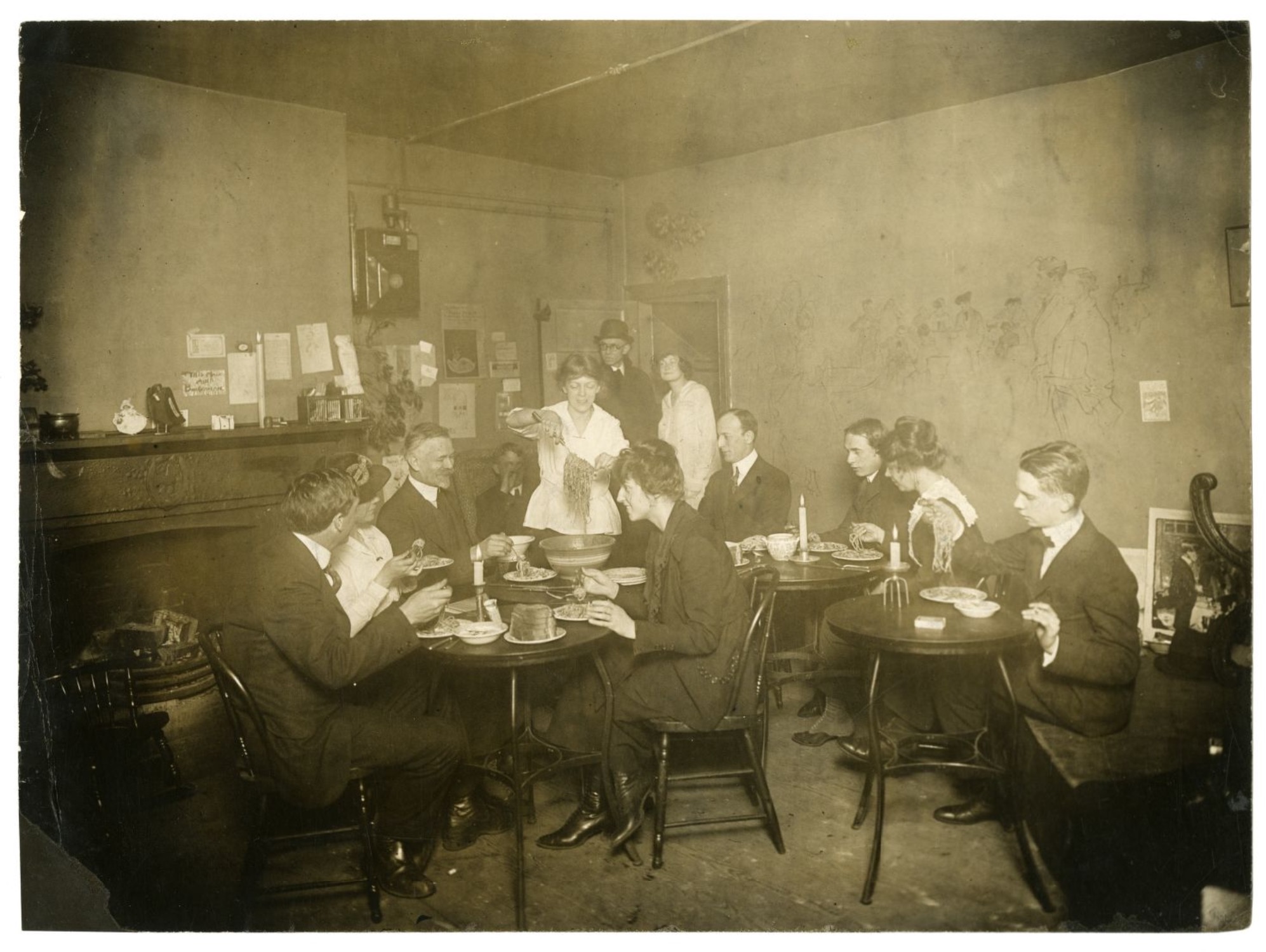
Grace Godwin’s Garret, at the corner of 58 Washington Square and Thompson Street, is now the location of the New York University Global Center for Academic and Spiritual Life. From 1917, it was where Godwin served breakfast, afternoon tea, after-dinner coffee and spaghetti dinners, until the building was demolished in the late 1920s.
That’s Grace and her patrons in the photo above. It was taken by Jessie Tarbox Beals (1870-1942), the eponymous owner of “Jessie Tarbox Beals Portraiture of Distinction. Thirteen East Fifty Seven, New York. Plaza 1036.” So said the hand-lettered business card with the address for the duplex apartment and studio Jessie Tarbox Beals rented in 1926 at 13 East 57th Street.
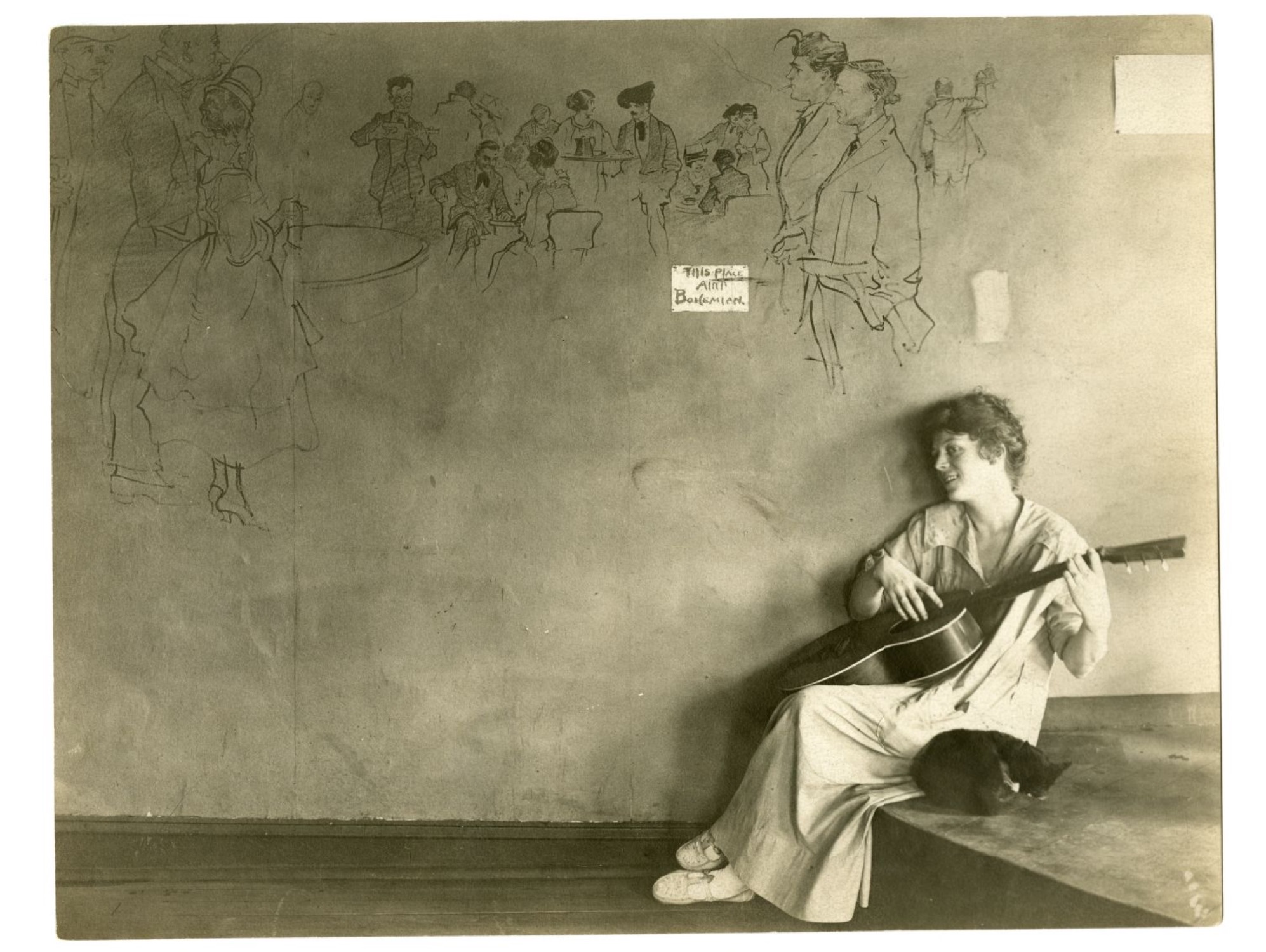
Grace Godwin’s garret NYC
Jessie Tarbox Beals (1870-1942), a school teacher who taught herself photography, joined the Buffalo Courier and Buffalo Inquirer staff in 1902 and achieved fame as the first woman press photographer.
Her life had changed in 1888 when she won a camera for selling a magazine subscription. “I began when I was a teacher in Massachusetts, with a small camera that cost me $1.75 for the whole outfit. In a week I had discarded it for a larger one and in five weeks that one had earned me $10.”
She moved to New York City in 1905 and remained there for most of her life, leaving only to live in southern California and Chicago for a few years during the late 1920s and early 1930s. Her body of work includes portraits, garden photography, city street scenes, fashion photography, and documentary photography.
And at some point, Beals was photographing Dear Grace. In Around Washington Square: An Illustrated History of Greenwich Village, we read:
“Early in 1917, ‘Mother’ Grace Godwin became the next proprietor to take over the garret at No. 58. Her unconventional eatery owed its inspiration to Bruno’s demonstration that downtown atmosphere could be packaged for profit, though she rejected his giant placards in favor of smaller and more discrete advertisements; the decor was pure Polly Holladay. Word quickly spread, wrote Jan Seidler Ramirez in [her book], that ‘diners could observe local painters scratching graffiti on the restaurant’s walls, or rub elbows with impoverished poets and budding Bolsheviks.’
“Adding to the drama of dining, ‘the philosophically inclined proprietress made a practice of engaging customers in ‘soul chats’ while inveigling them to purchase the painted cigarette cases that her cherubic daughter Nancy peddled from table to table.’ Grace Godwin’s Garret, as her place was known, was the most visible, as it was the end of the bus lines in Washington Square, but many other restaurants were already successfully trading on the square’s radical chic.”
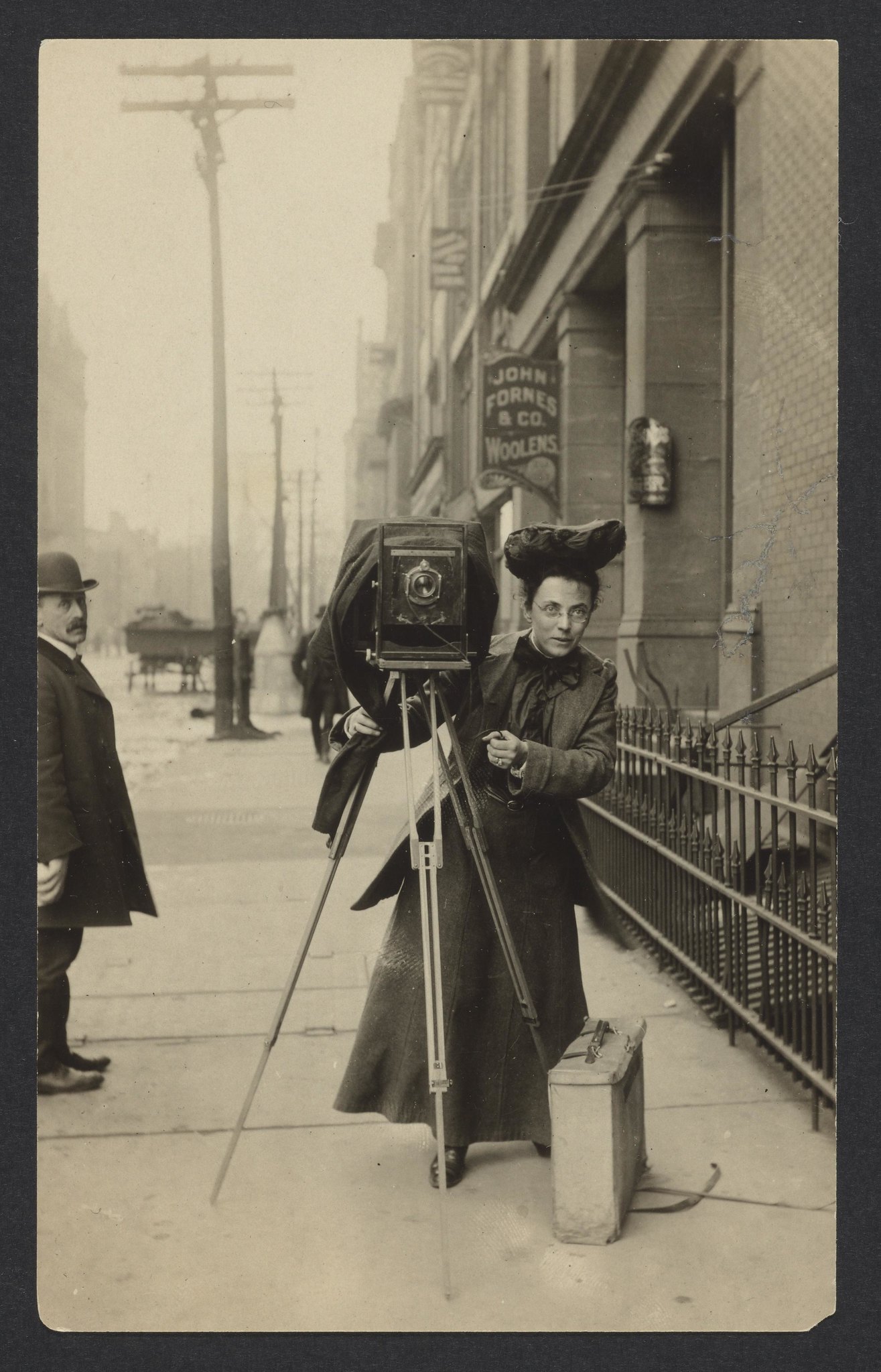
Portrait of Jessie Tarbox Beals standing on a city sidewalk with her camera, ca. 1901-1903.
In May of 1921, the NY Times reported that Grace “has been found guilty of breaking the statute which forbids the refusal to serve negroes in a restaurant.” Tea and spite was on the menu. But Goodwin was defiant.
“The Garret is a place where I combine the necessity for making money with the necessity for having friends and seeing them sometimes,” she told the media. “I doubt whether there ever was anyone as lonely as I was when I first came to New York several years ago, and it has pleased me very much to feel that others who are lonely have found companionship as well as chocolate cake and coffee…
“The only necessity I deal in is friendship, and I reserve my right to choose my friends, I’ve taken down the sign which made the garret a public eating place in the eyes of the law, and it will be in the future just a club. If I have to fight in the courts to establish my right to run the place as I please, the last right I reserve is that of walking out. I will simply close the Garret and walk away.”
Before Grace moved in, No. 58 was home to a popular candy and cigar shop on the ground floor and Guido Bruno’s Garret on the second, where local artists exhibit and for an admission fee tourists could observe “genuine Bohemian” artists at work. He produced a series of little magazine publications from there, including Bruno’s Weekly, Bruno’s Monthly, Bruno’s Bohemia, Greenwich Village, and the 15 cent Bruno Chap Books.
The frame buildings were reportedly heavily damaged in a fire in 1916, in which Bruno lost many historical items of great value, including unpublished manuscripts by George Bernard Shaw and Mark Twain. That’s the famous American writer below, in another of Jessie Tarbox Beals’ photos.
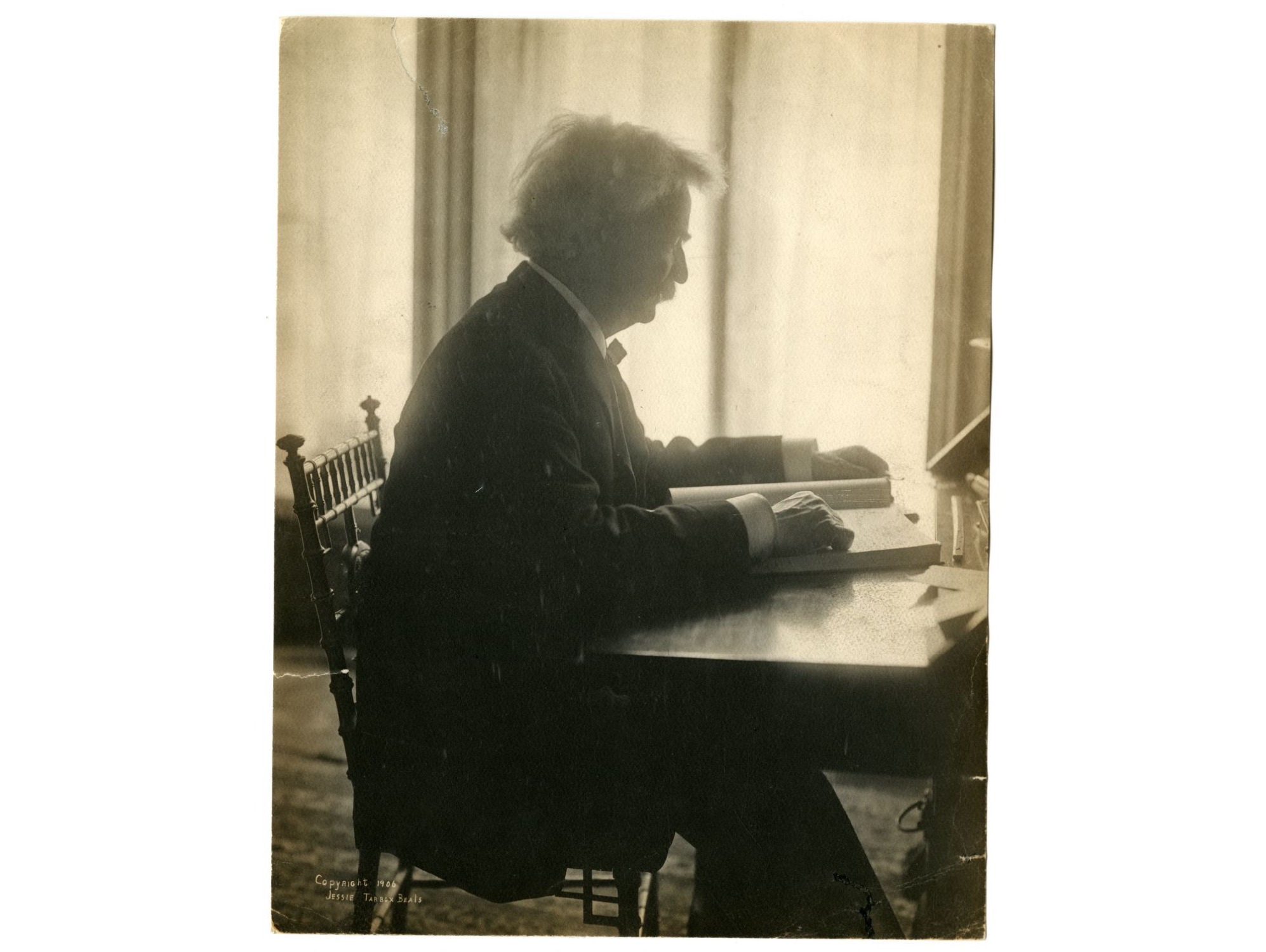
Mark Twain
Jessie Tarbox Beals took all these photo of Greenwich Village and other parts of New York City. Over the years Beals photographed several presidents and celebrities, including Presidents Calvin Coolidge, Herbert Hoover and William Taft. As the New York Historical Society, which houses her work, notes: “She practiced many types of commercial photography with the vigor and speed associated with news work.”

Mrs. Alice Woodward Rhinehardt, 400 E. 52 St.
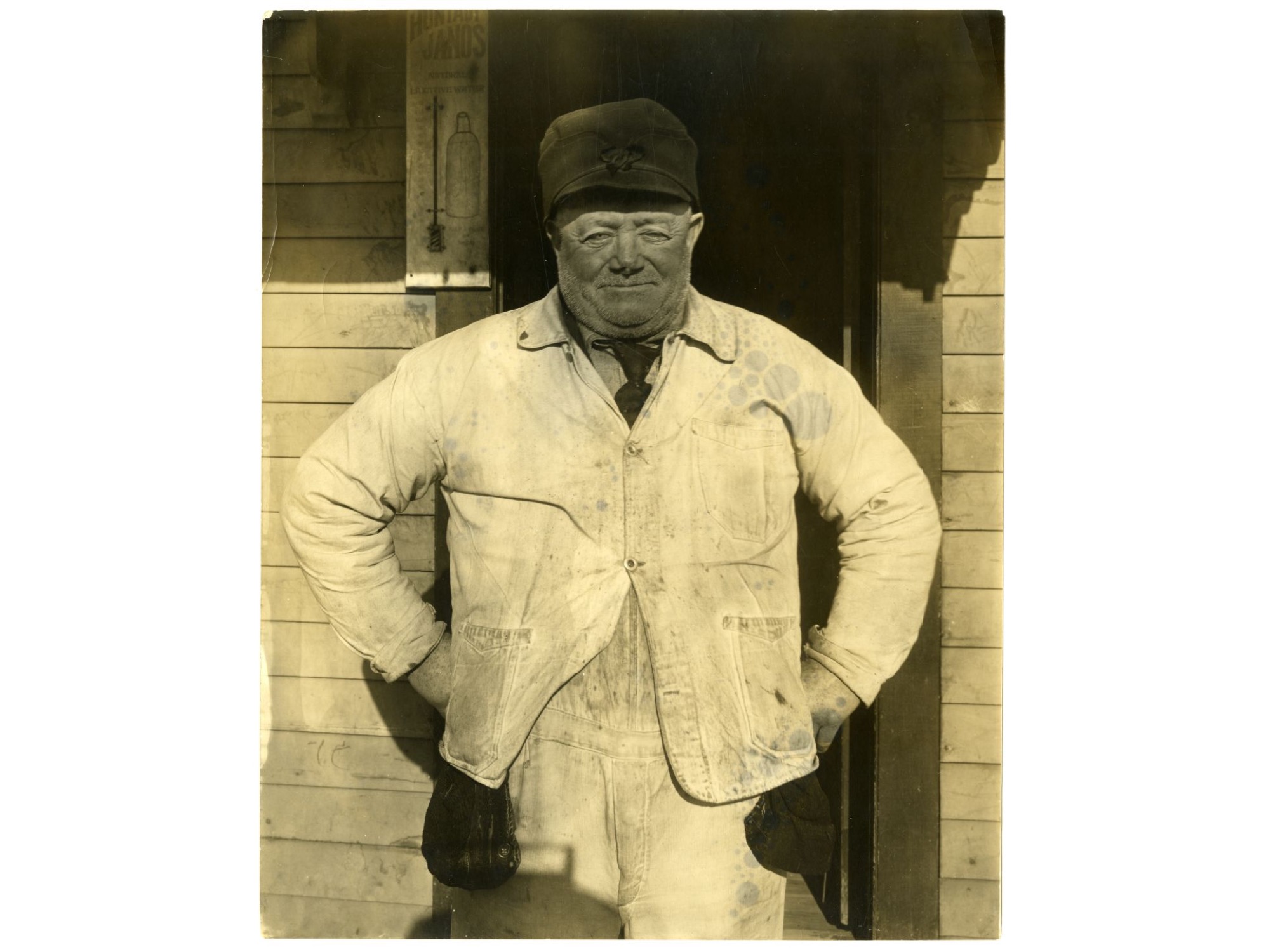
Uncle Jerry Simpson
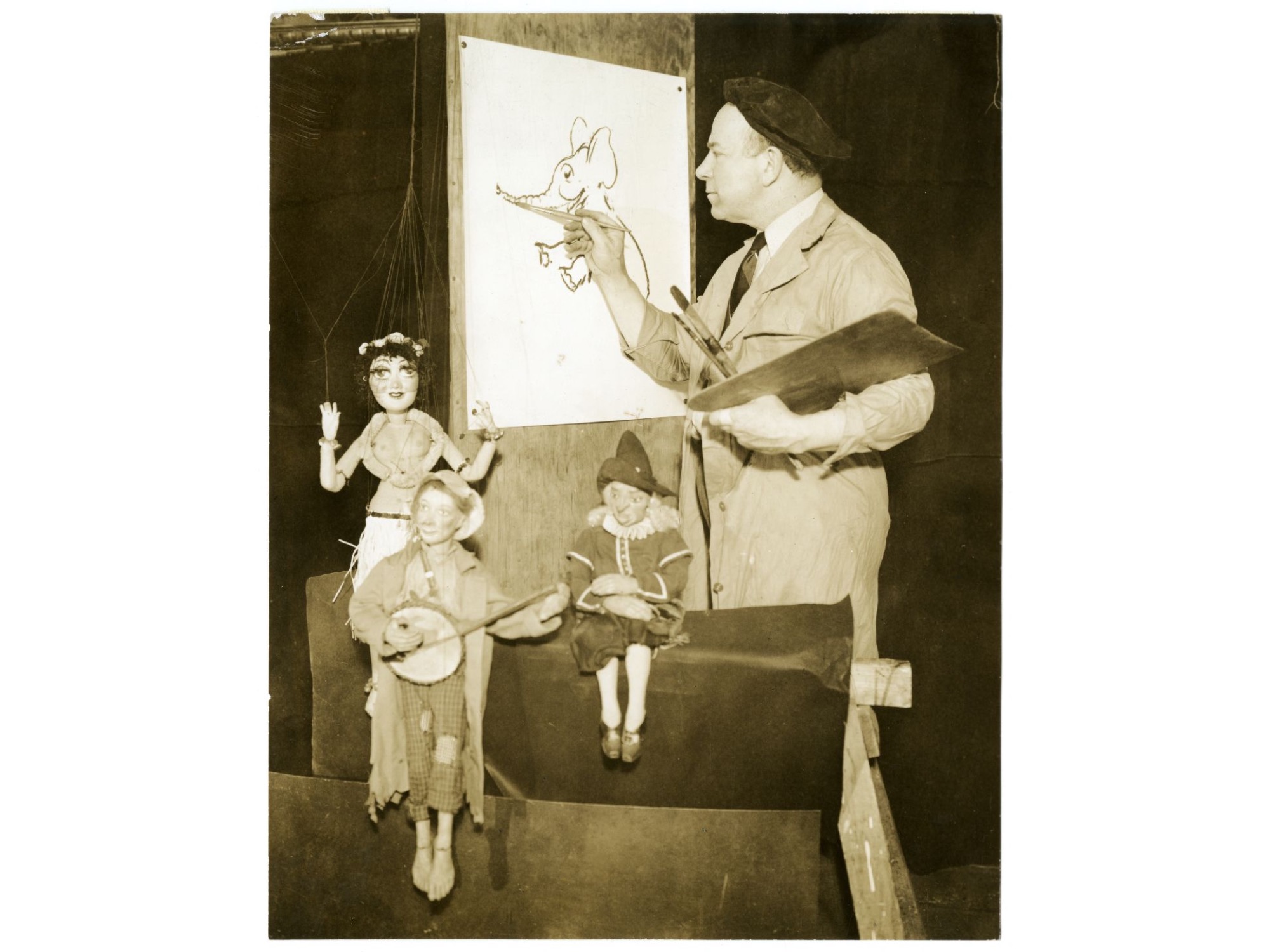
Tony Sarg – More about him here.
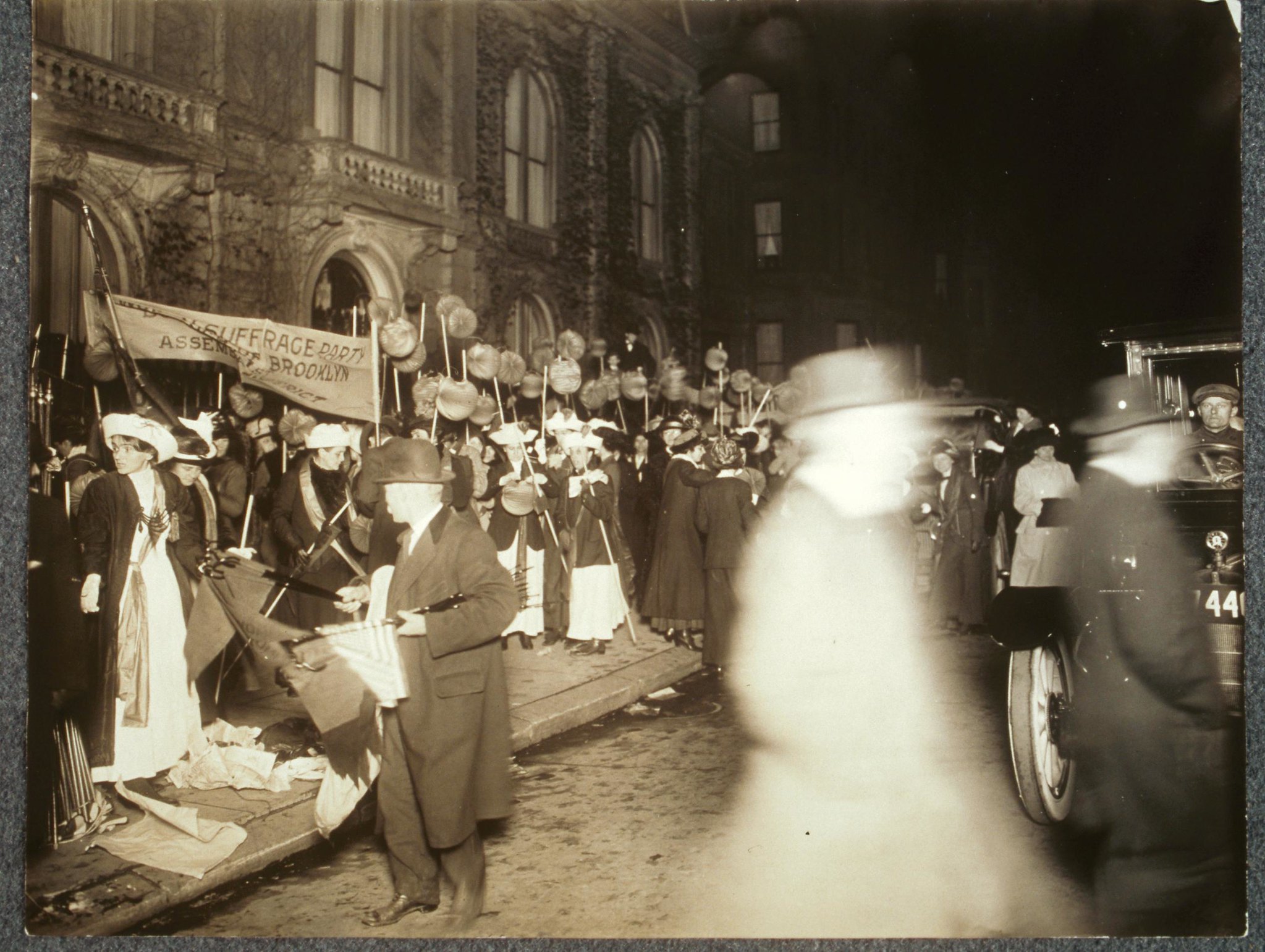
A nighttime suffrage parade in New York, ca. 1910-1915.
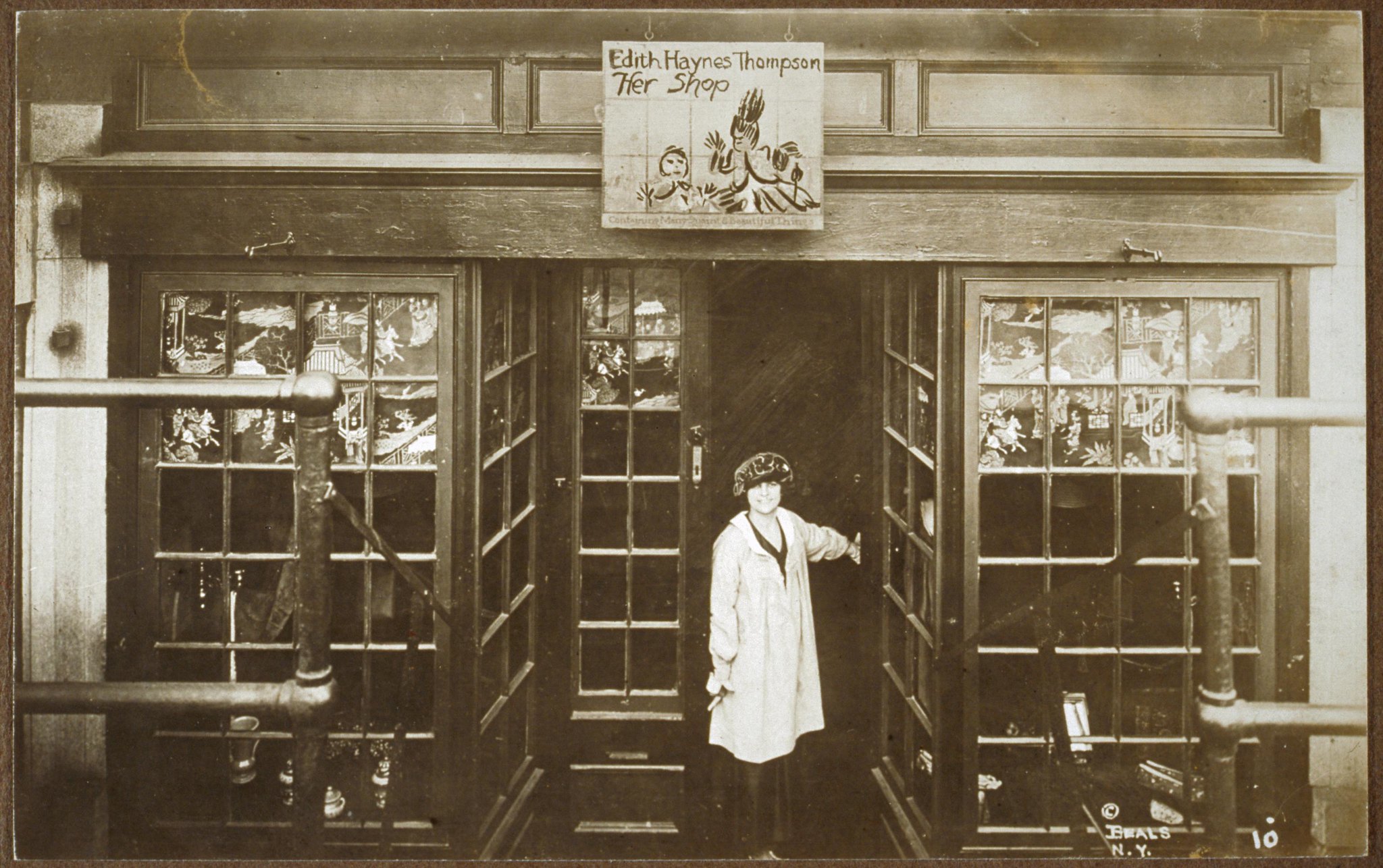
Edith Hayes Thompson standing in the doorway of Her Shop, ca. 1912-1926.
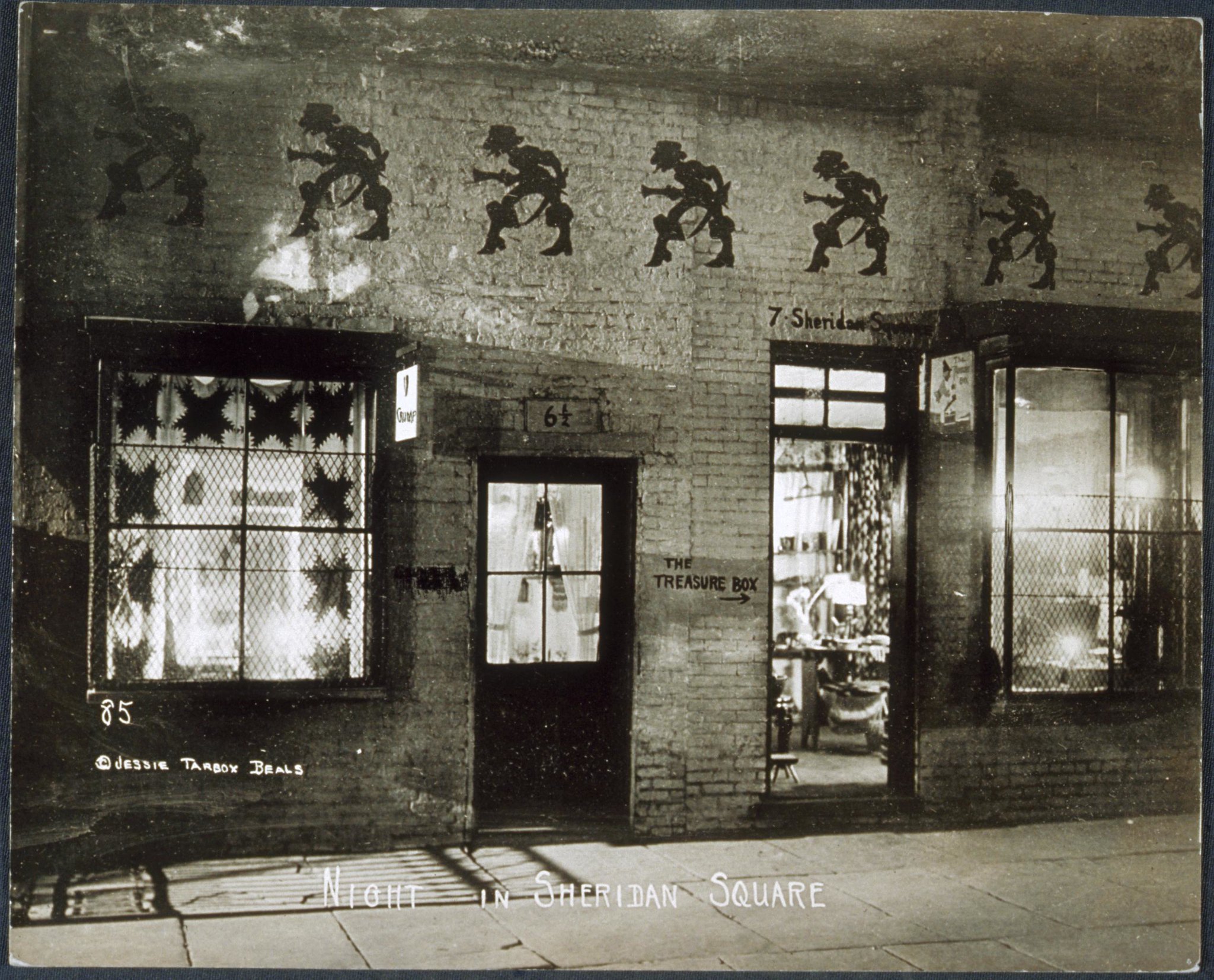
Exterior view of The Crumperie and The Treasure Box at night, ca. 1918-1920.
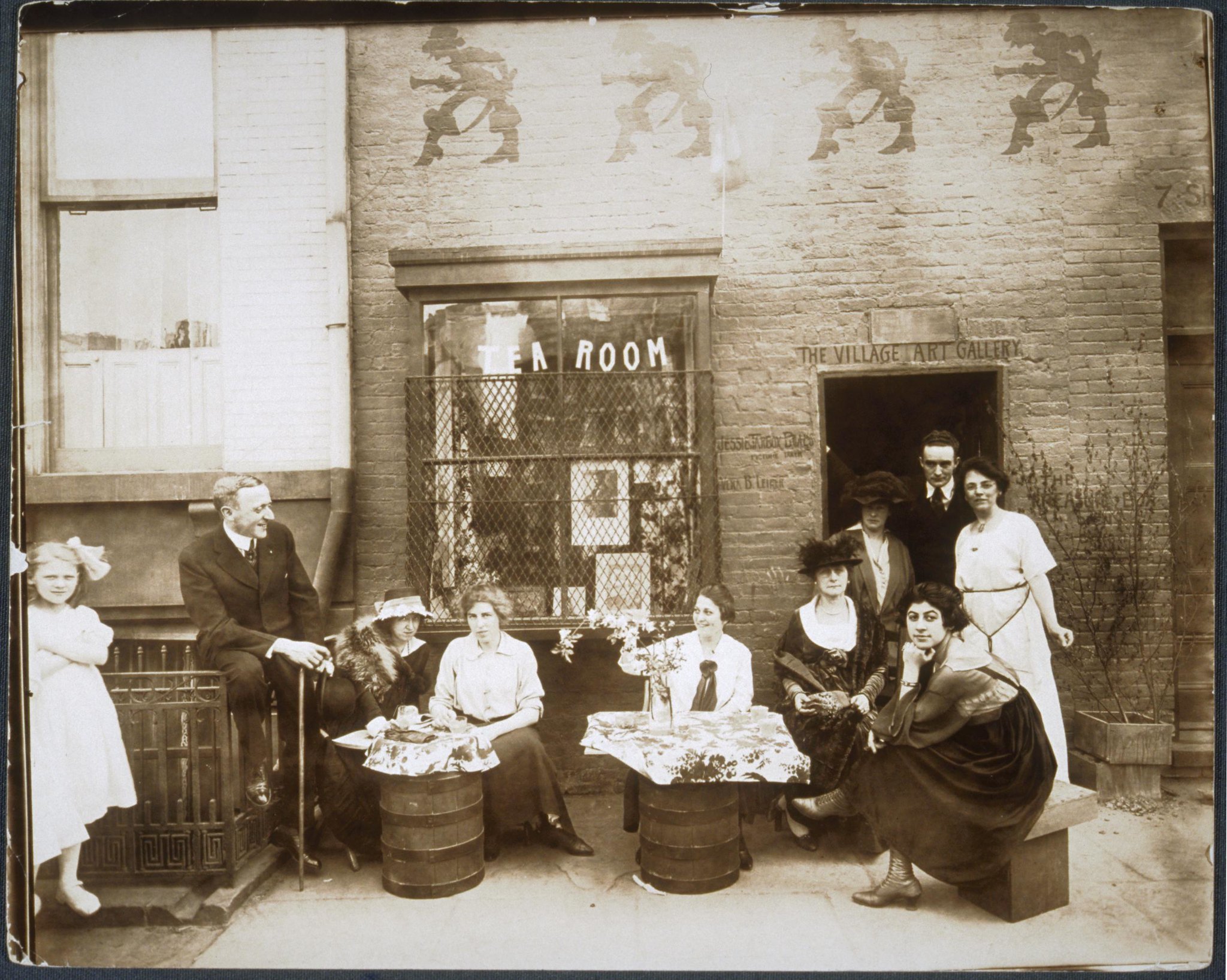
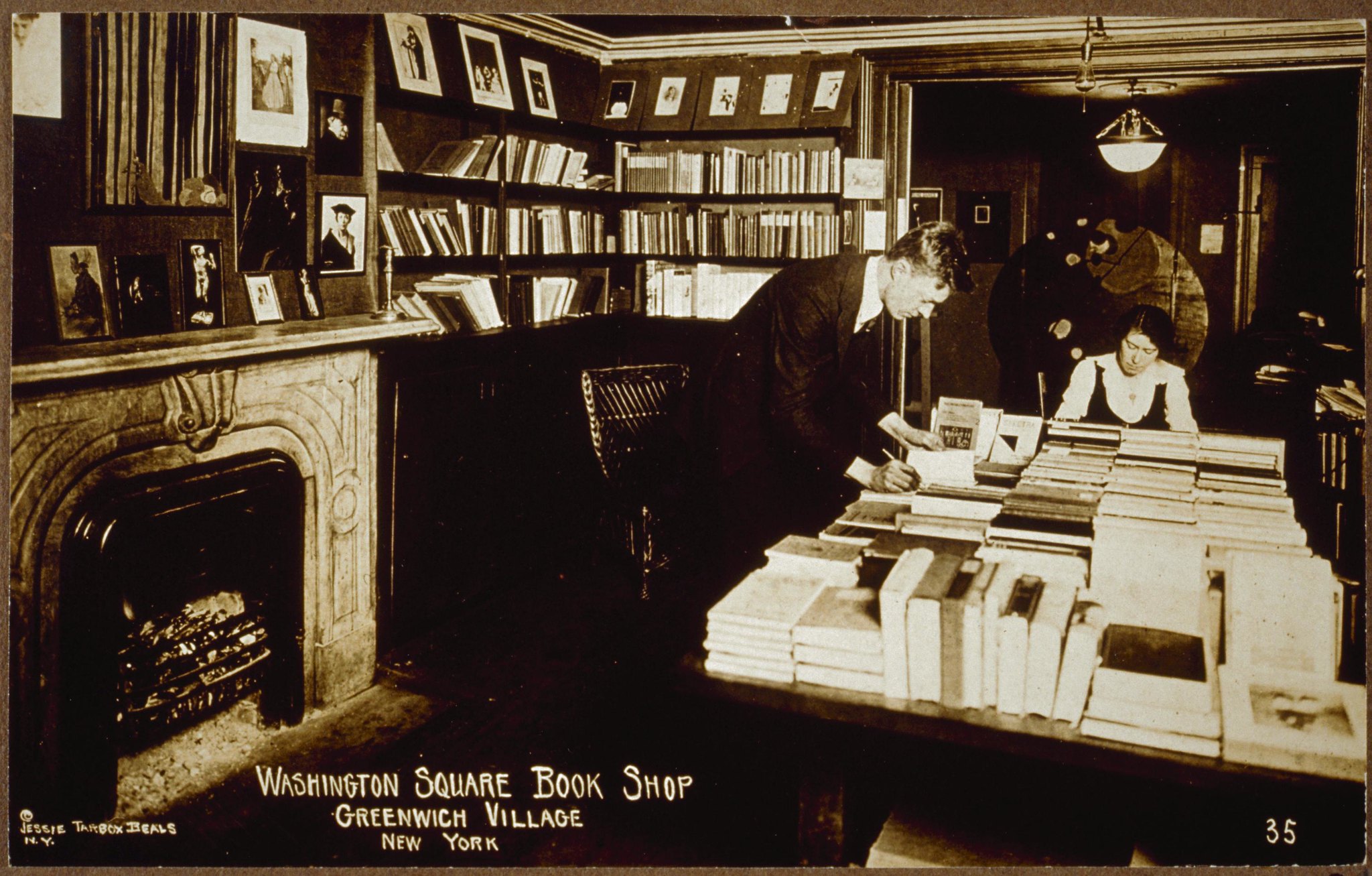
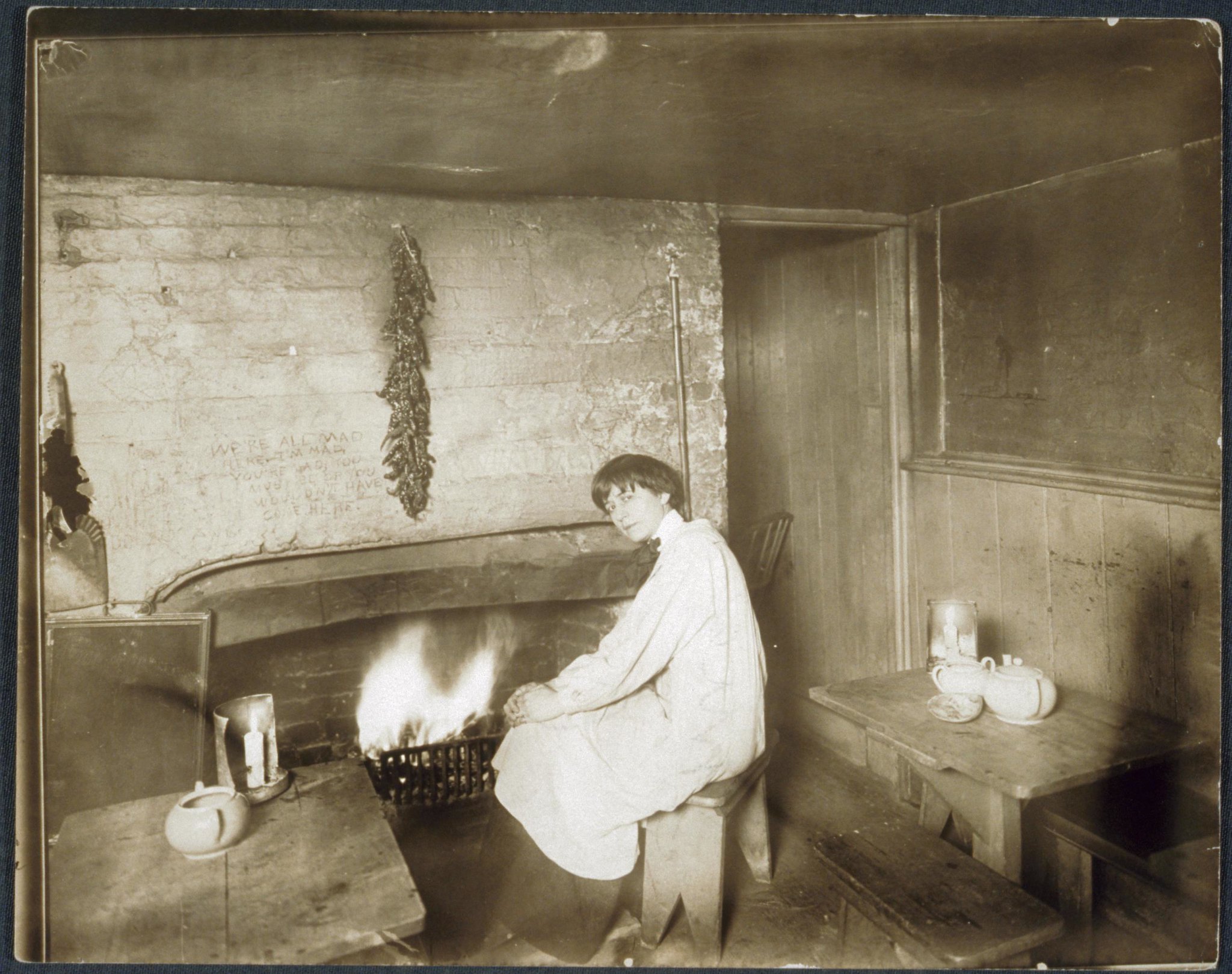
Portrait of Jenny Criswell, ca. 1912-1918.
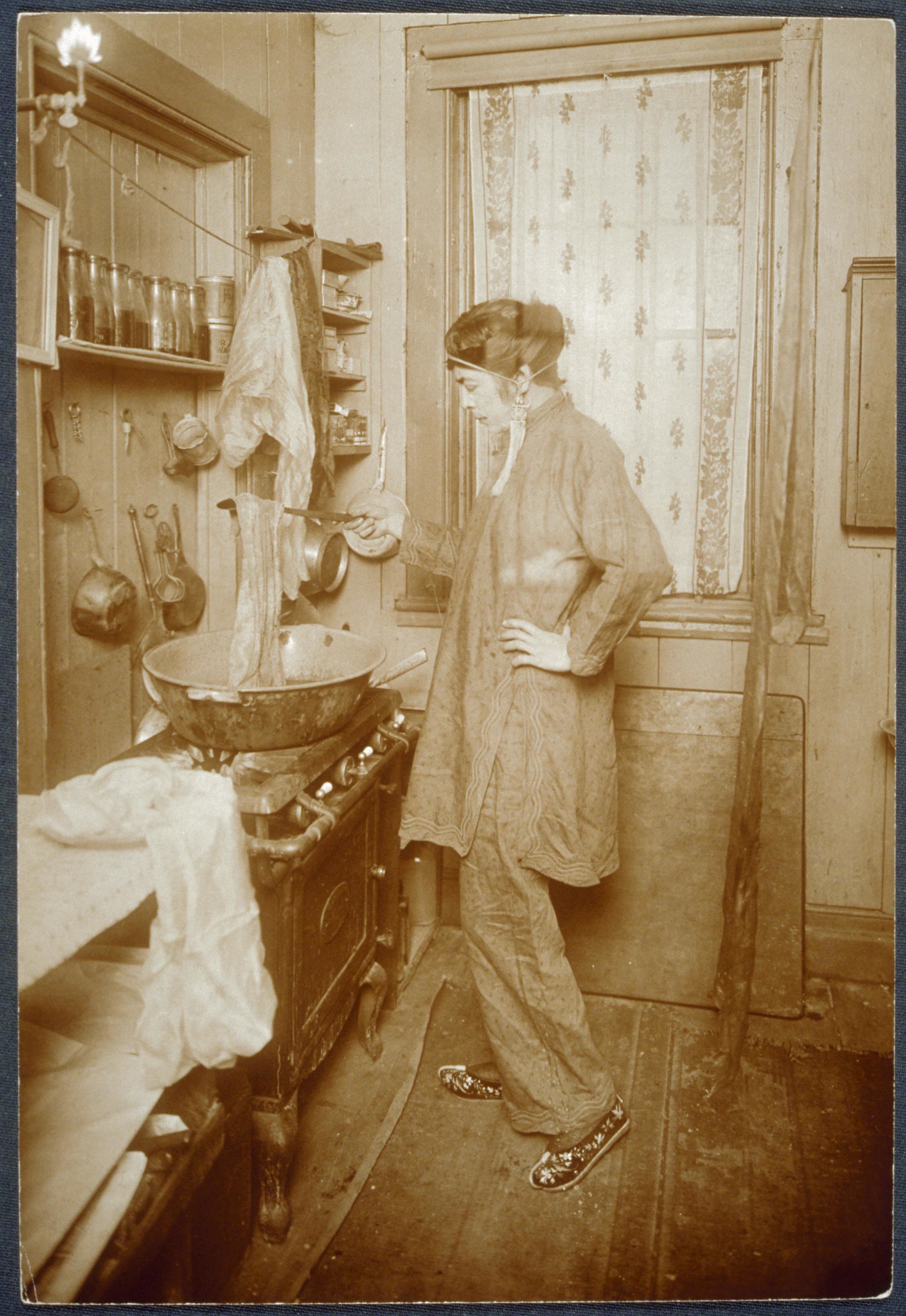
Allison at her kitchen stove, dying scarves, ca. 1912-1920.
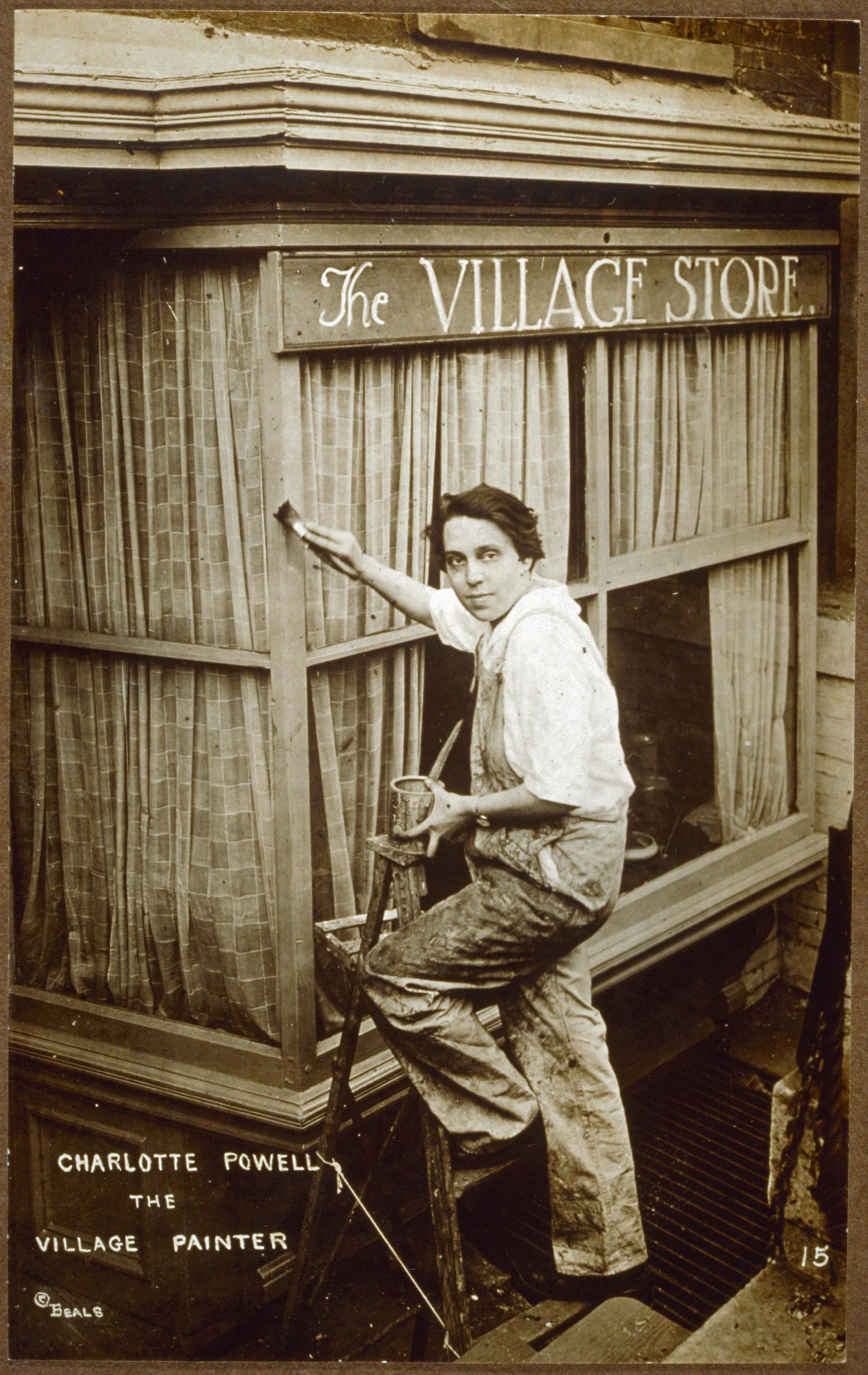
Portrait of Charlotte Powell standing on a ladder and painting the exterior of The Village Store, Sheridan Square, ca. 1915-1926.
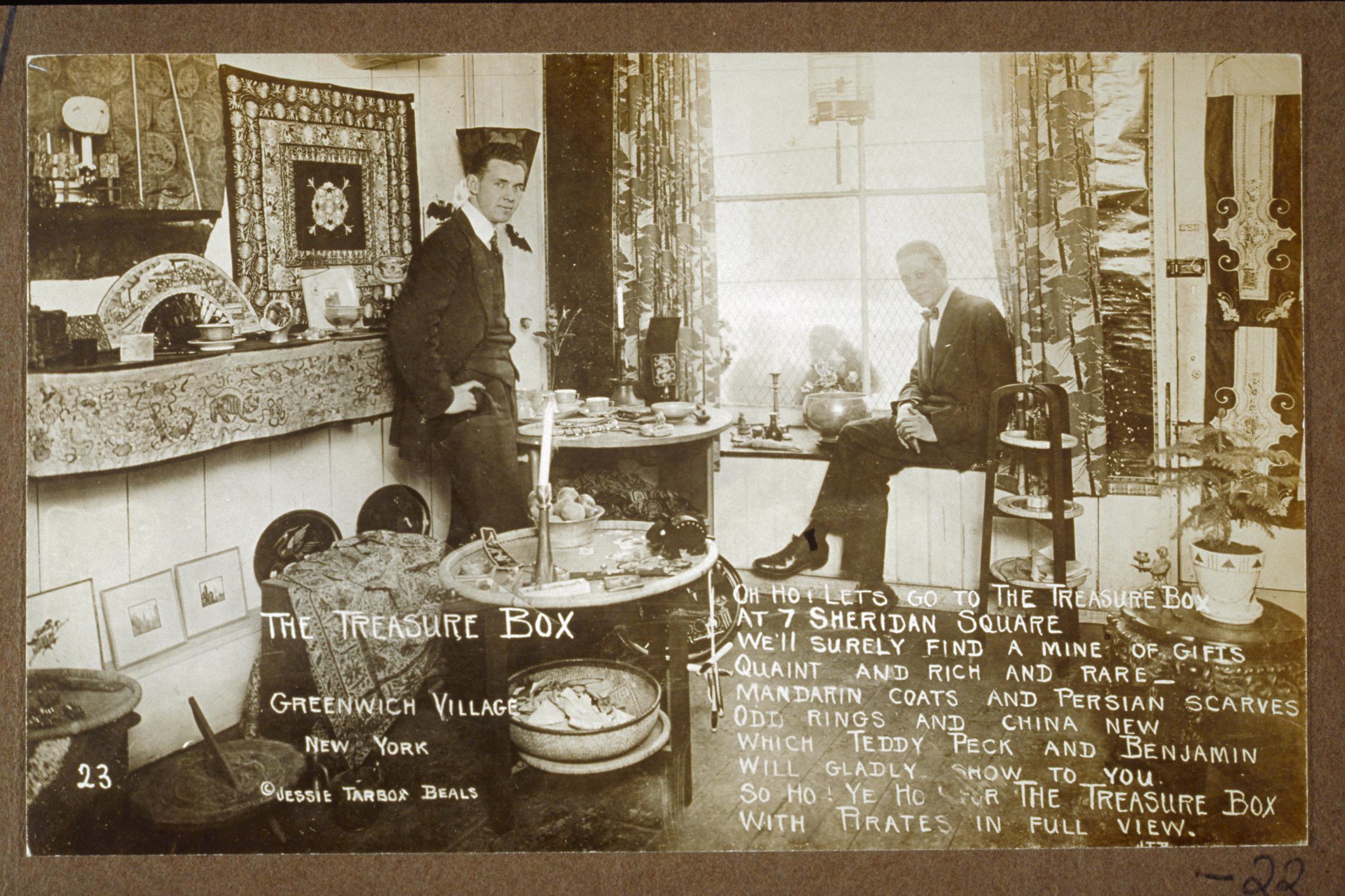
Teddy Peck and Romayne Benjamin in their retail shop, The Treasure Box, ca. 1912-1920.
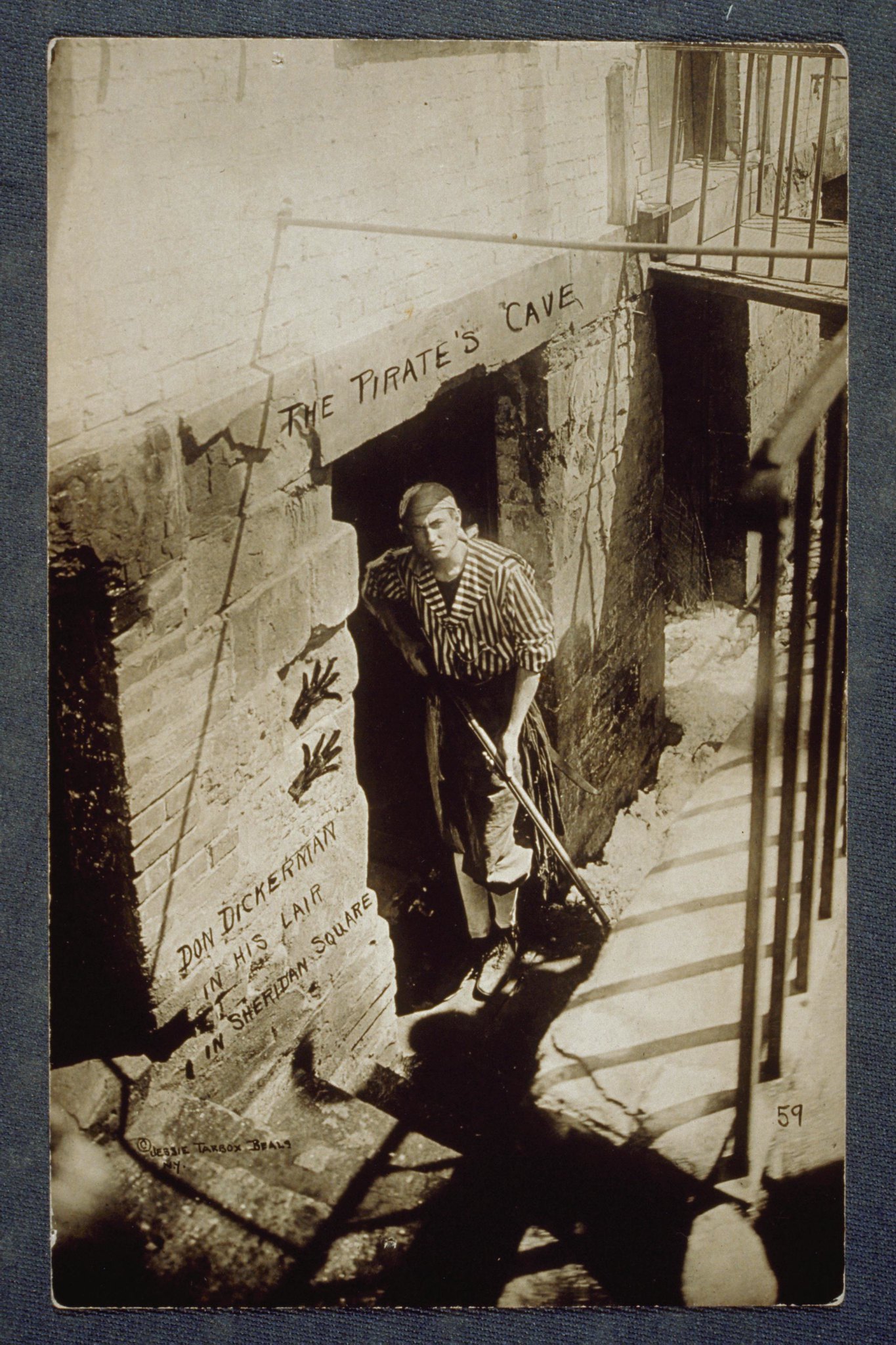
Portrait of Don Dickerman standing in the doorway of his business, ca. 1912-1920.
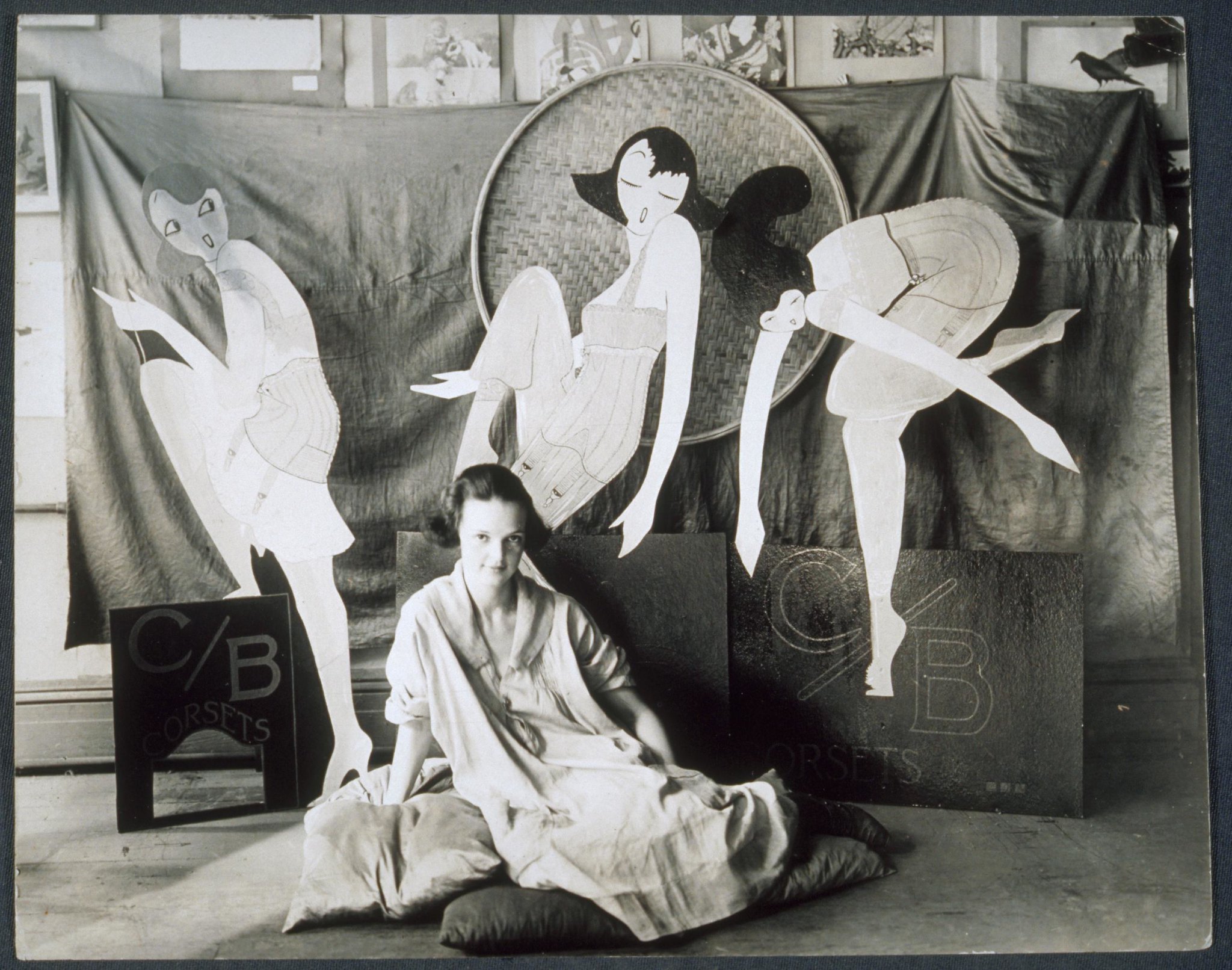
Lin seated on floor pillows, ca. 1917-1925.
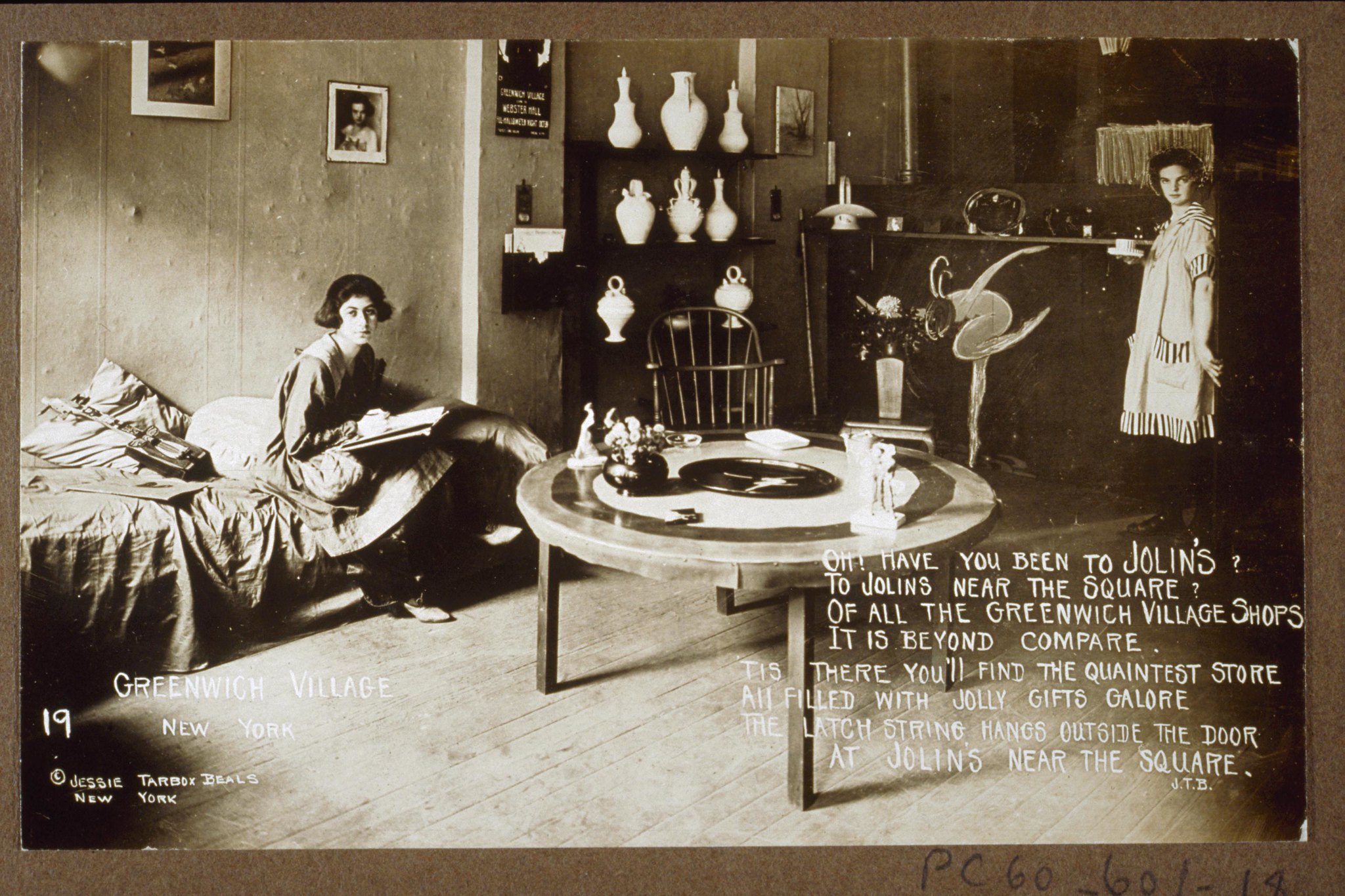
Joan Schromache and Lin inside their shop, Jolin’s, ca. 1915-1926.
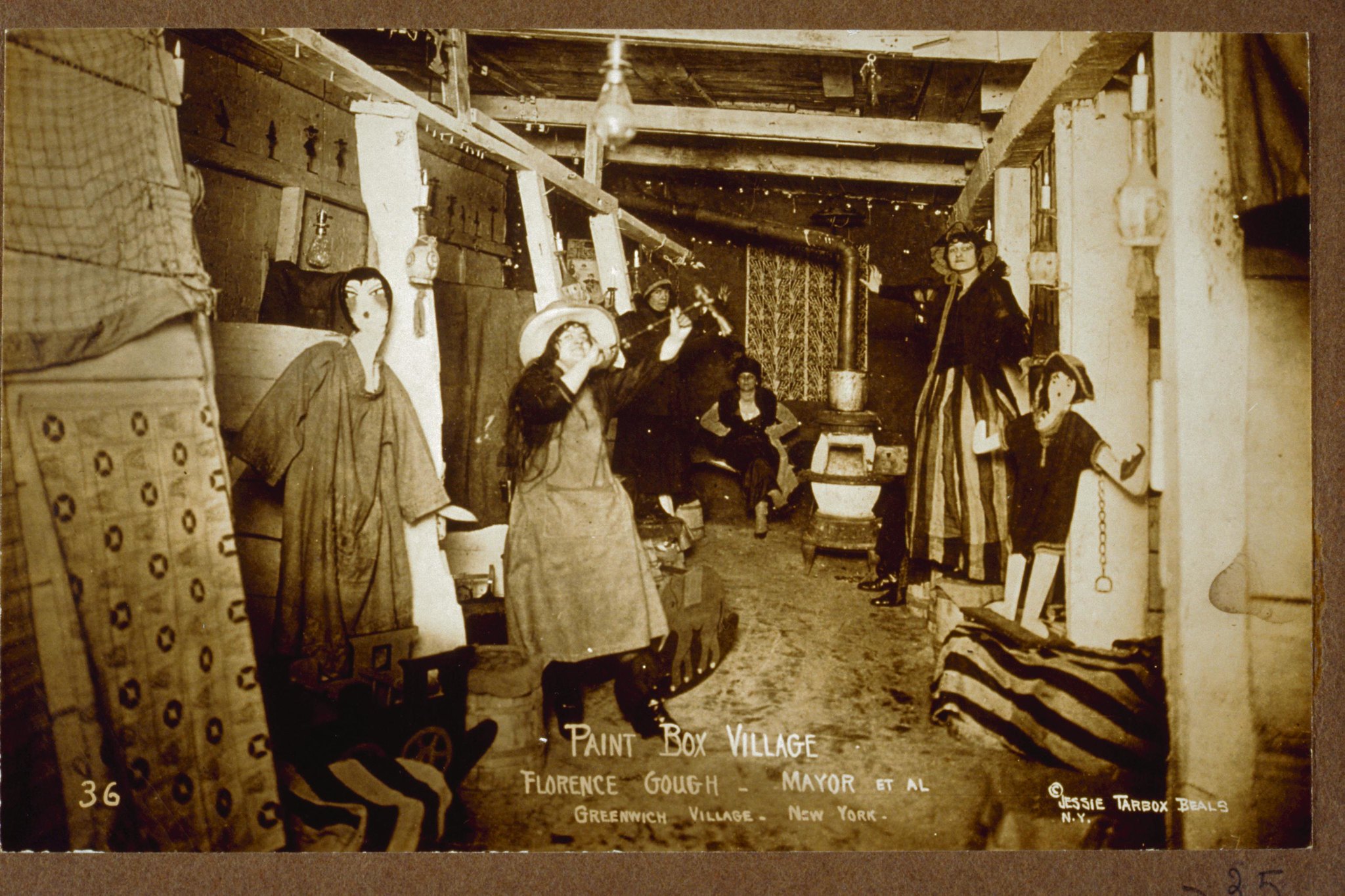
Florence Gough and friends and:or patrons inside of her shop, The Paint Box, ca. 1912-1925.
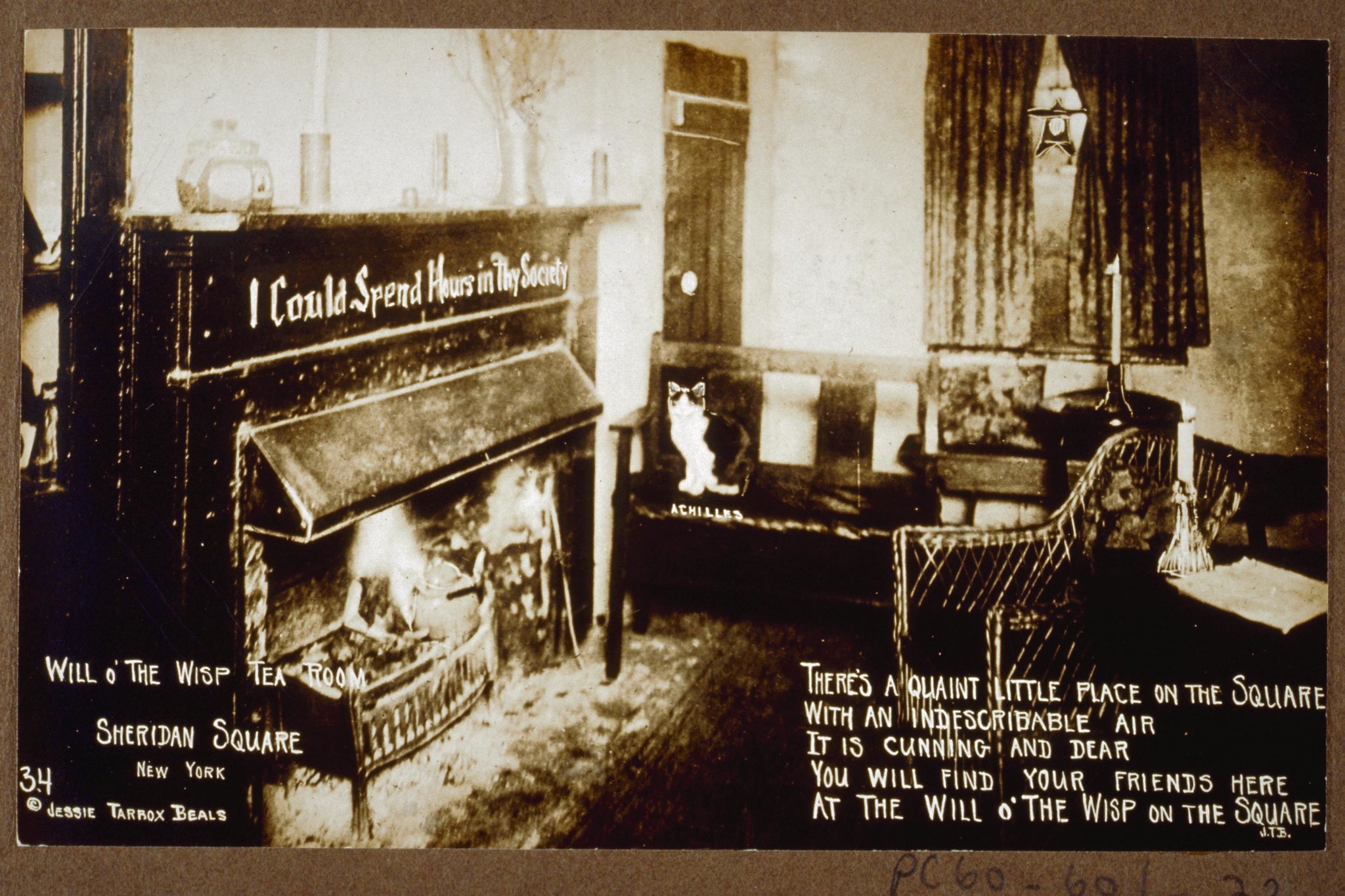
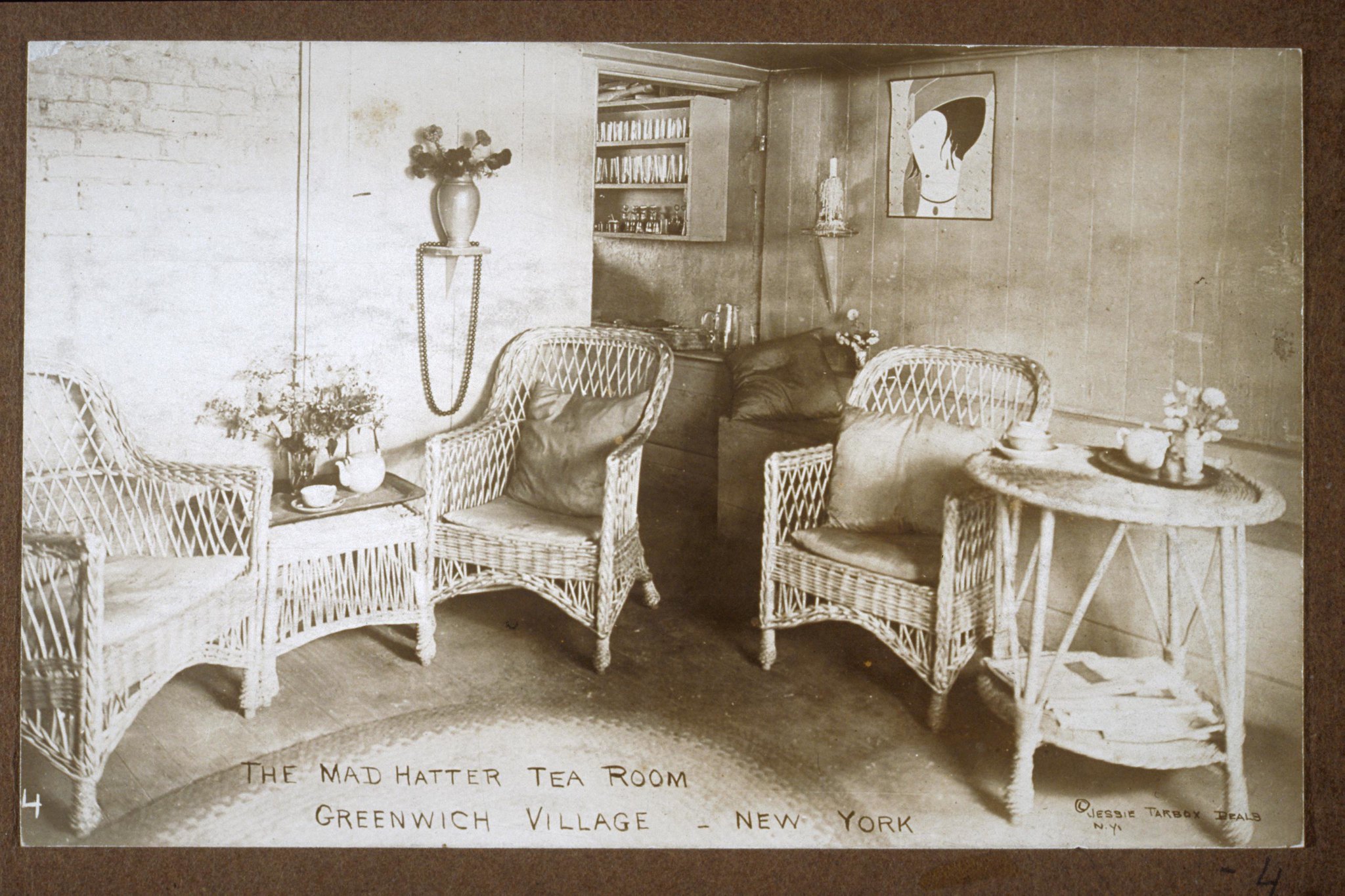
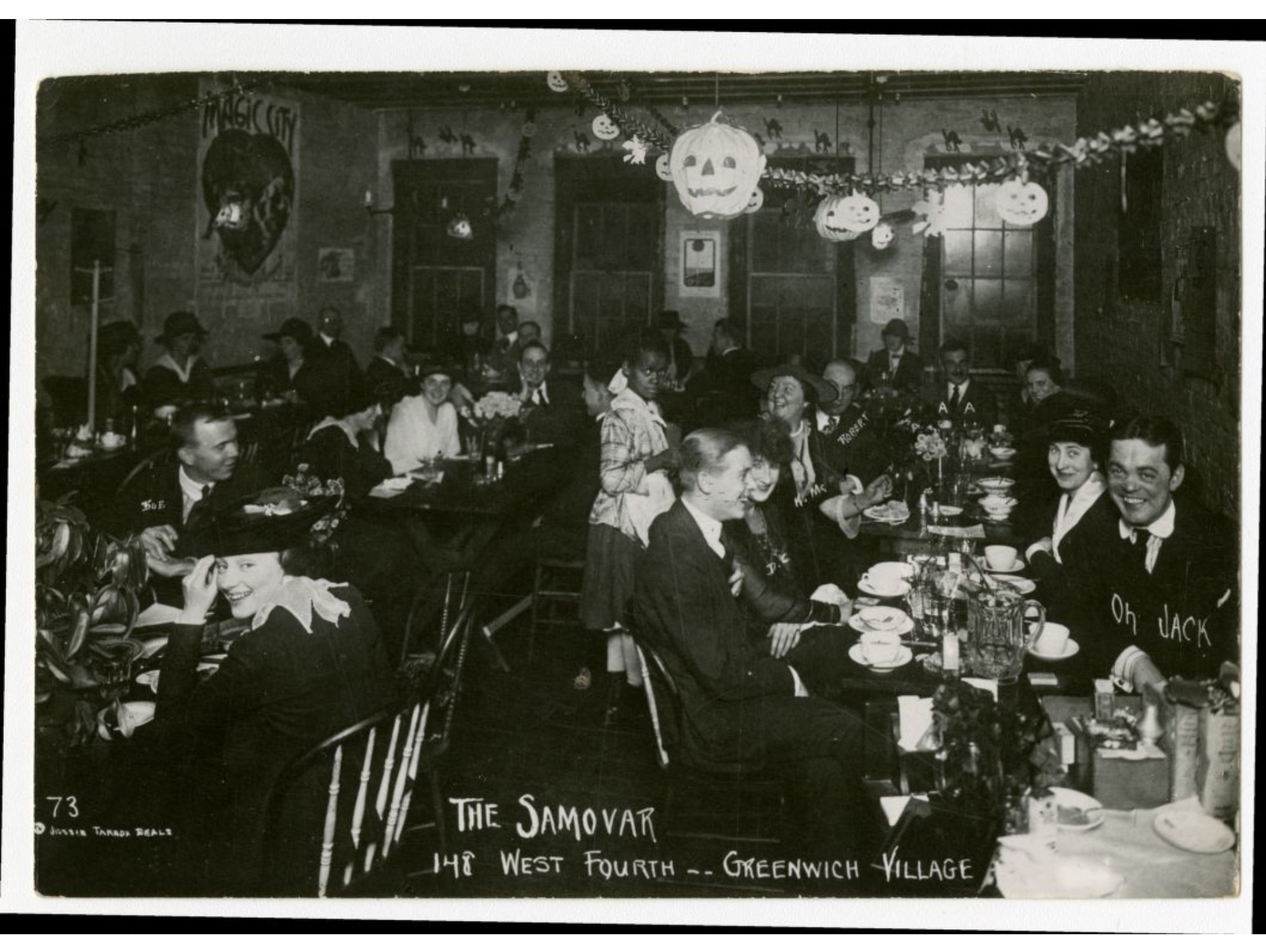
The Samovar, 148 West Fourth, Greenwich Village
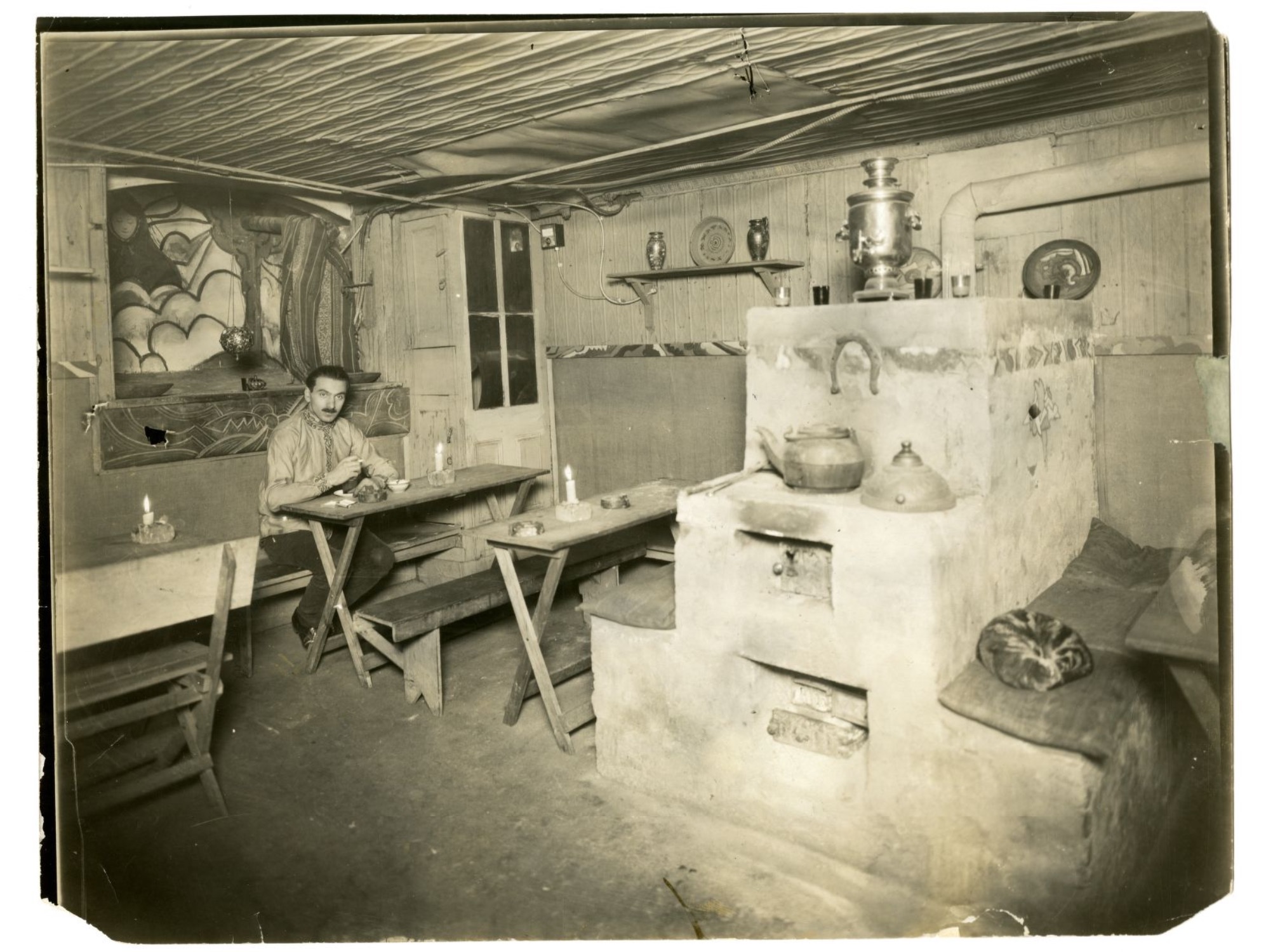
The Isba Tea Room on 4th St. Sachia–now a famous photographer in Europe [Russian Tea Room]
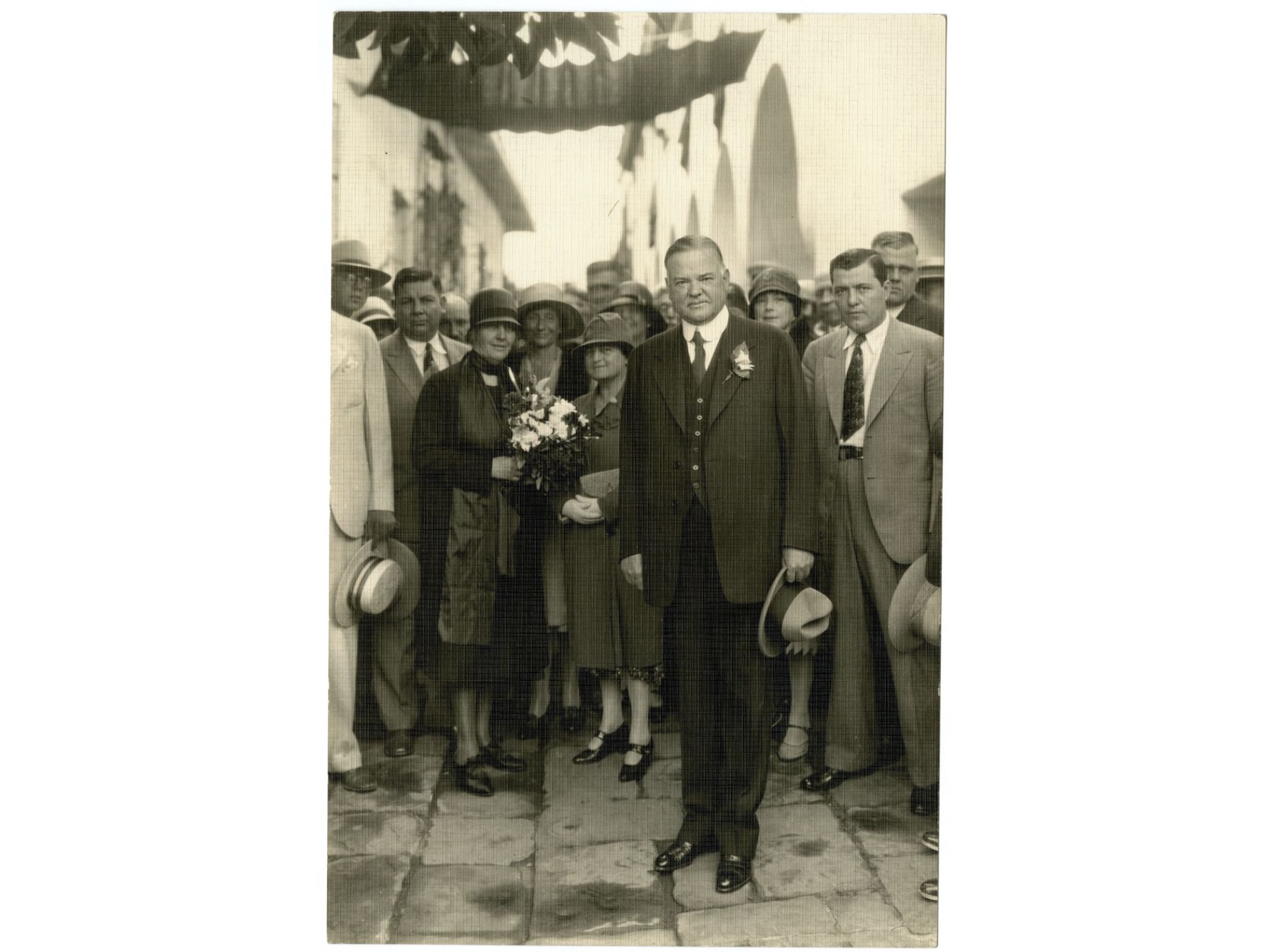
President Hoover–Mrs. Hoover holding bouquet
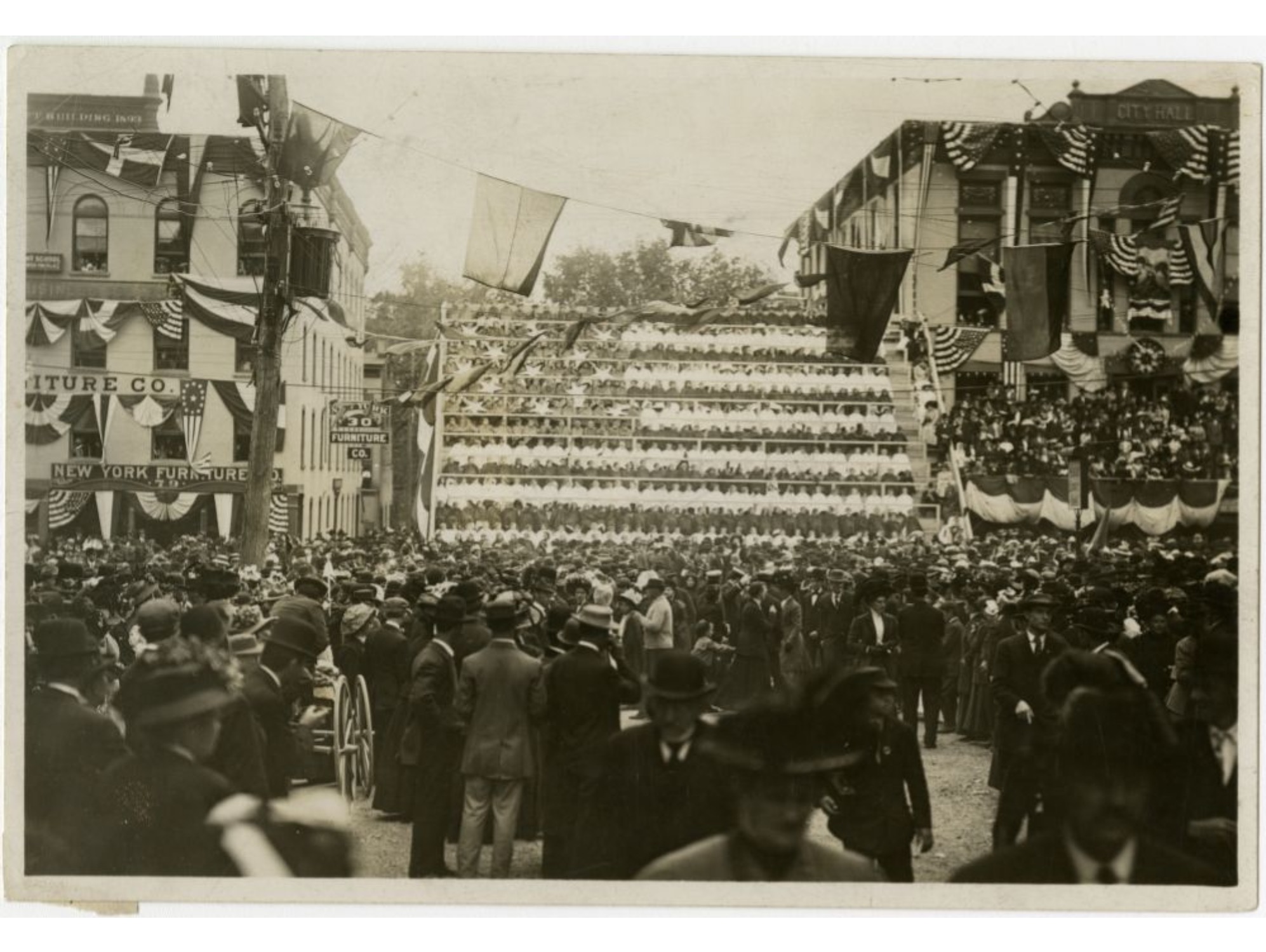
Newburgh – Living flag
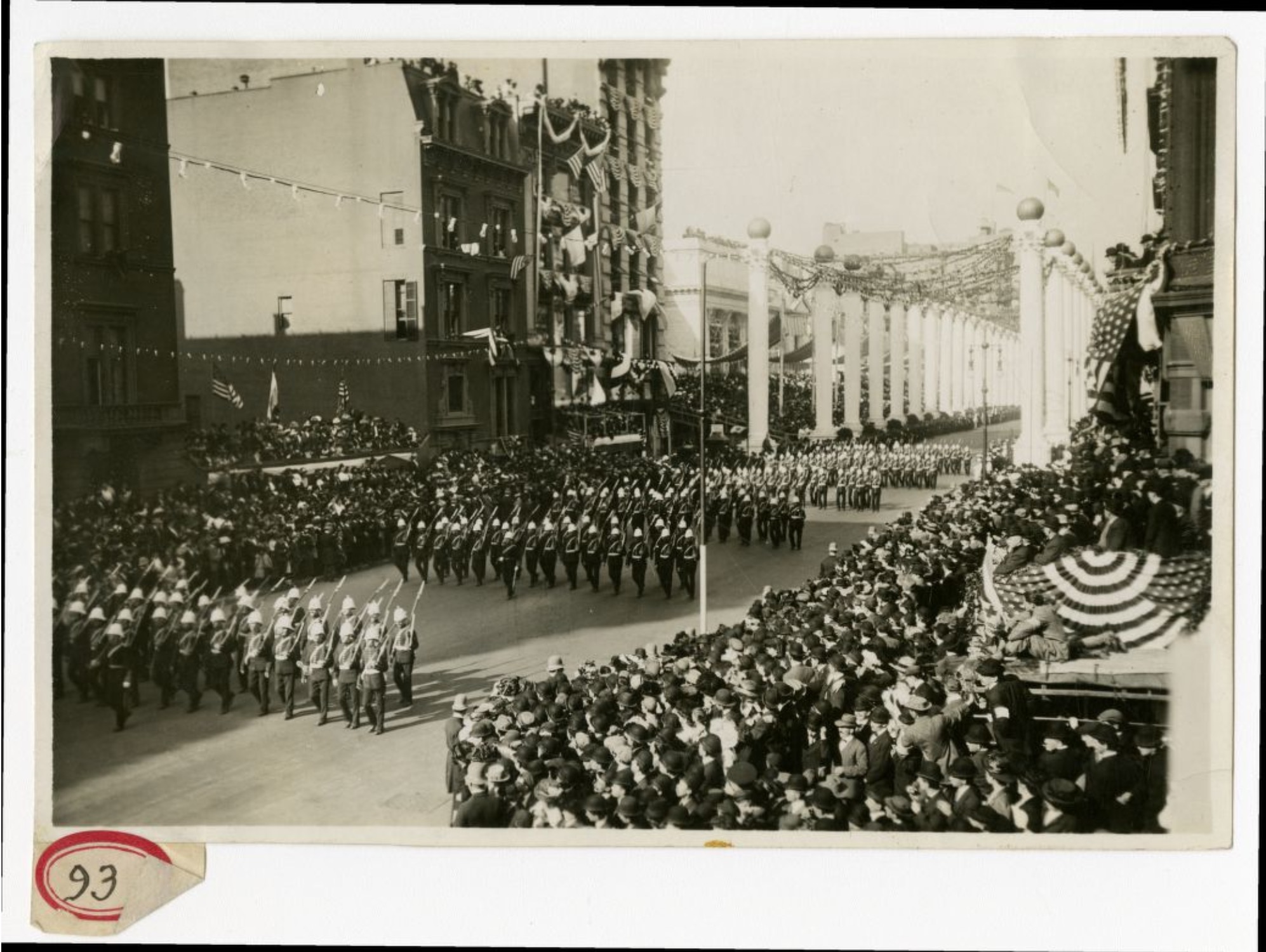
Military Parade at Court of Honor [Marines, Great Britain]
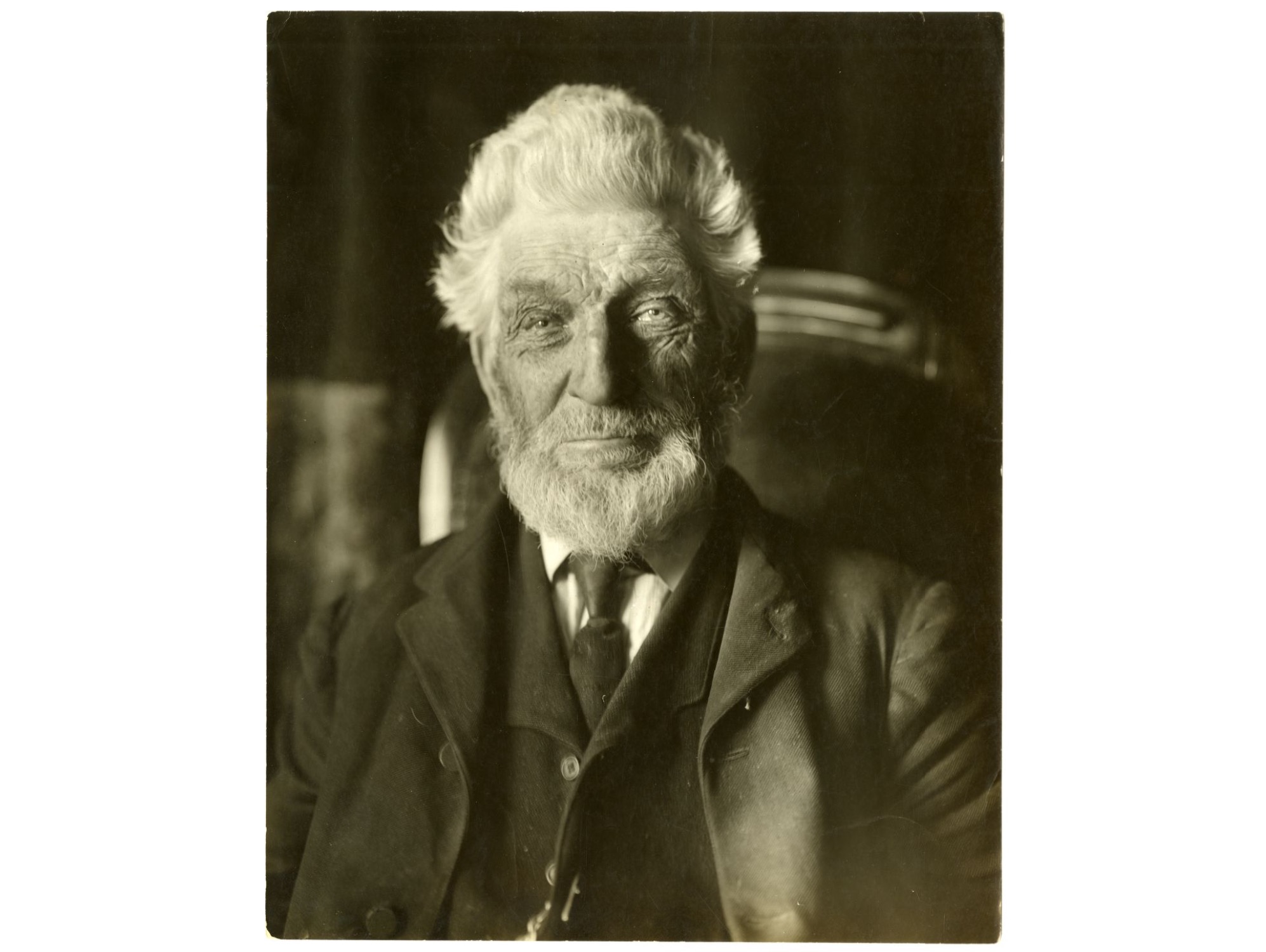
Mr. Messenger, bee man
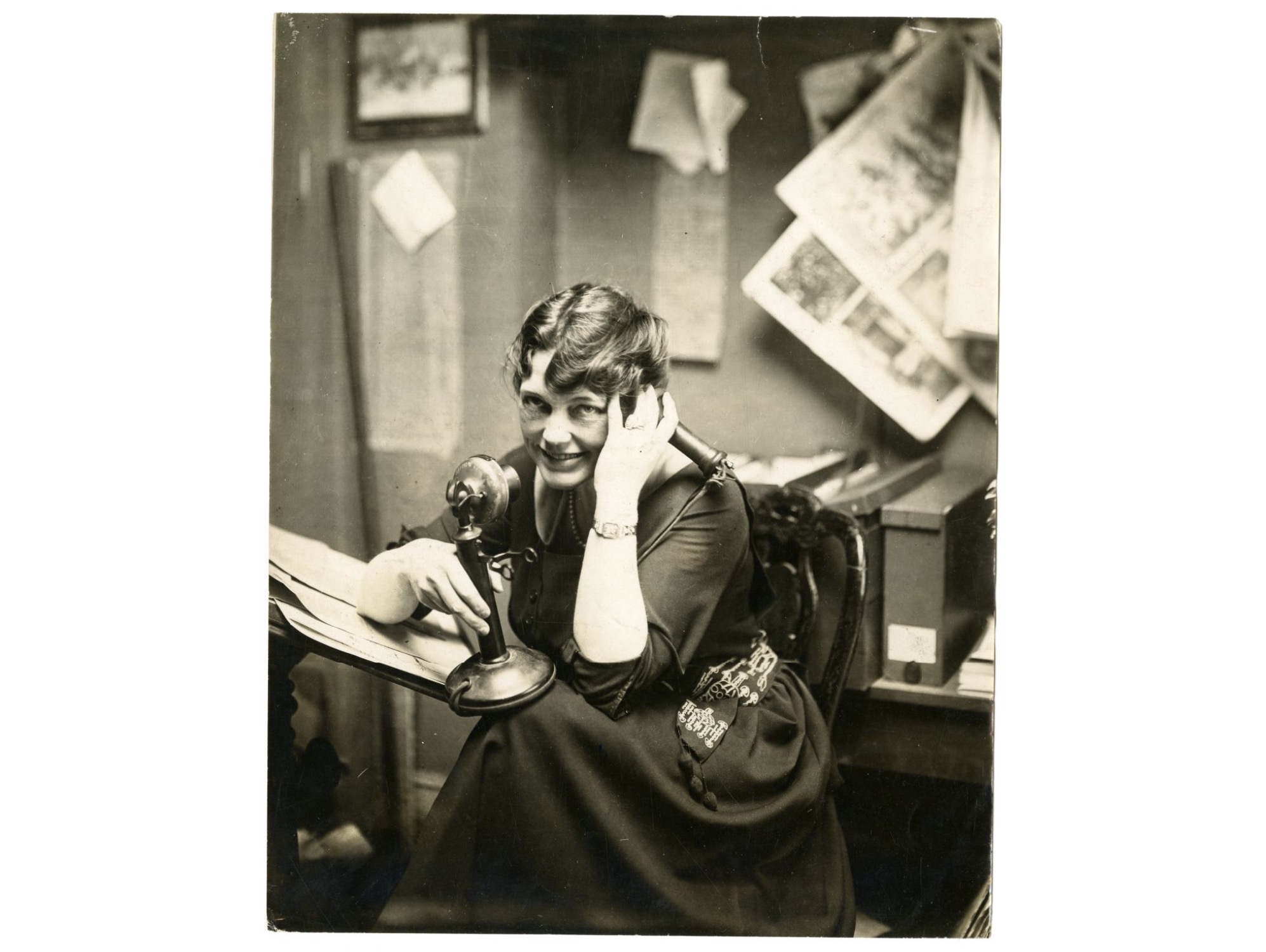
May Wilson Preston, artist & illustrator
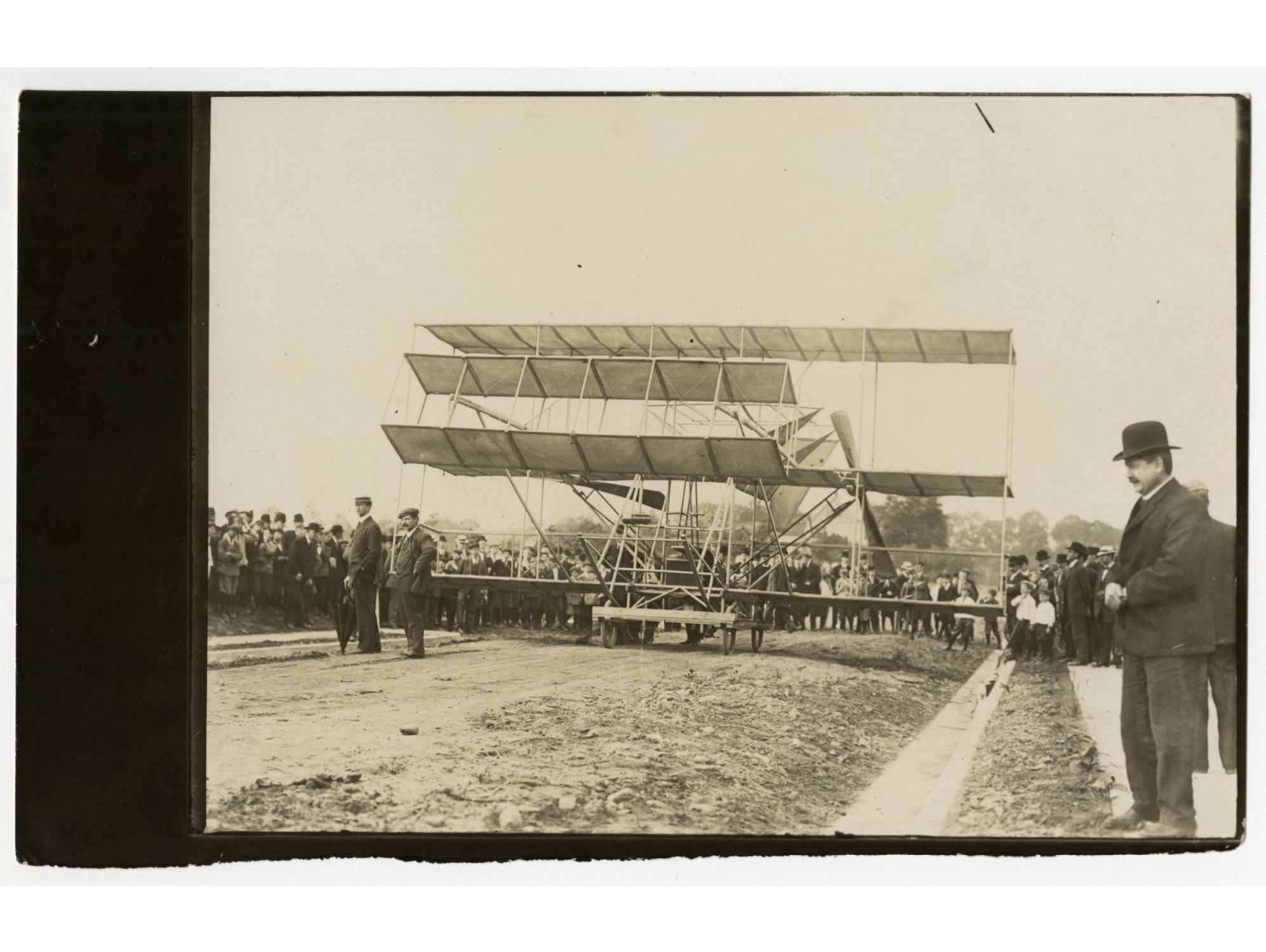
Maurice Bihe in NYC
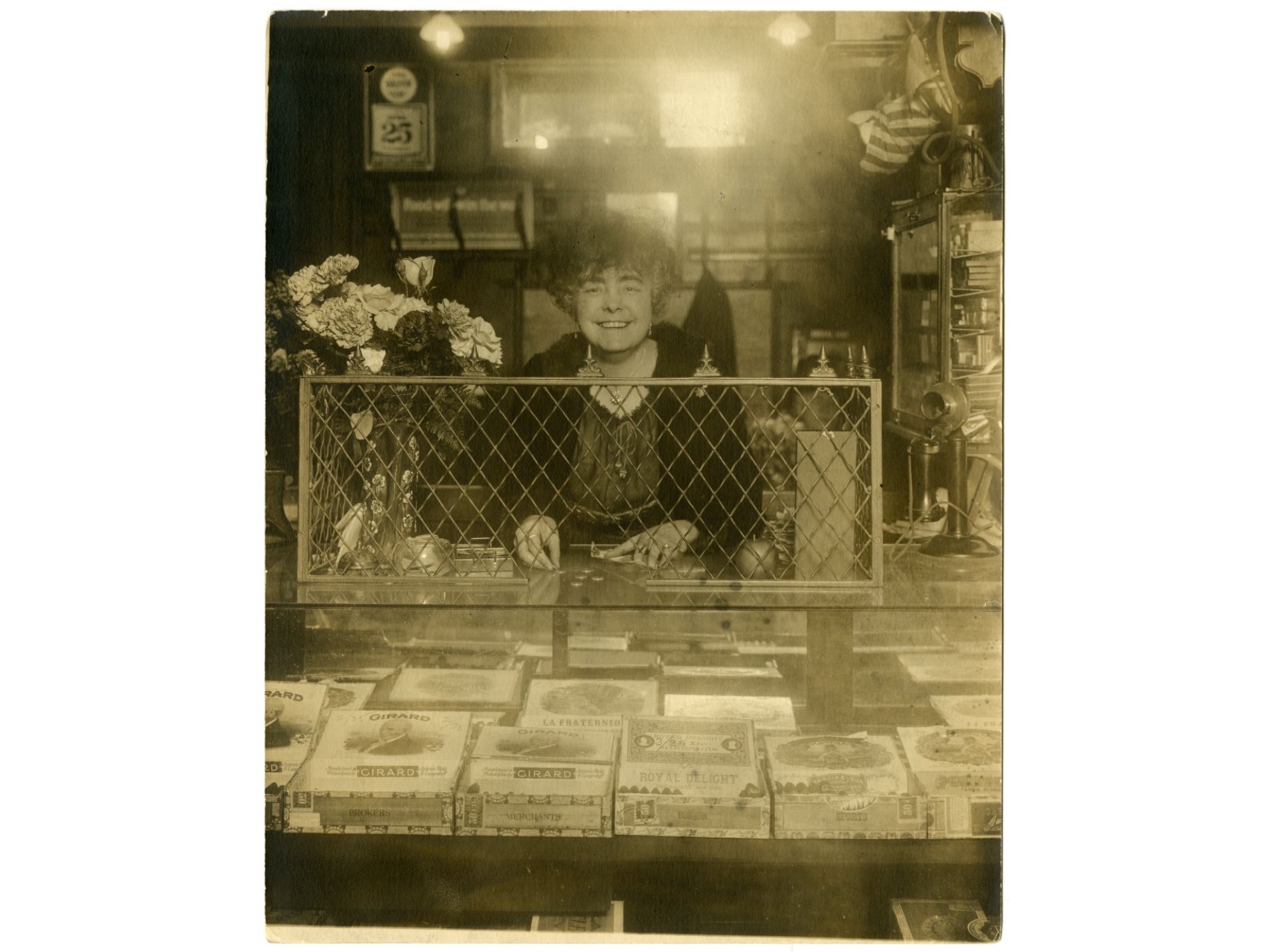
Madam Girard

Madam Girard of NY, famous downtown restaurant [92 William St.].
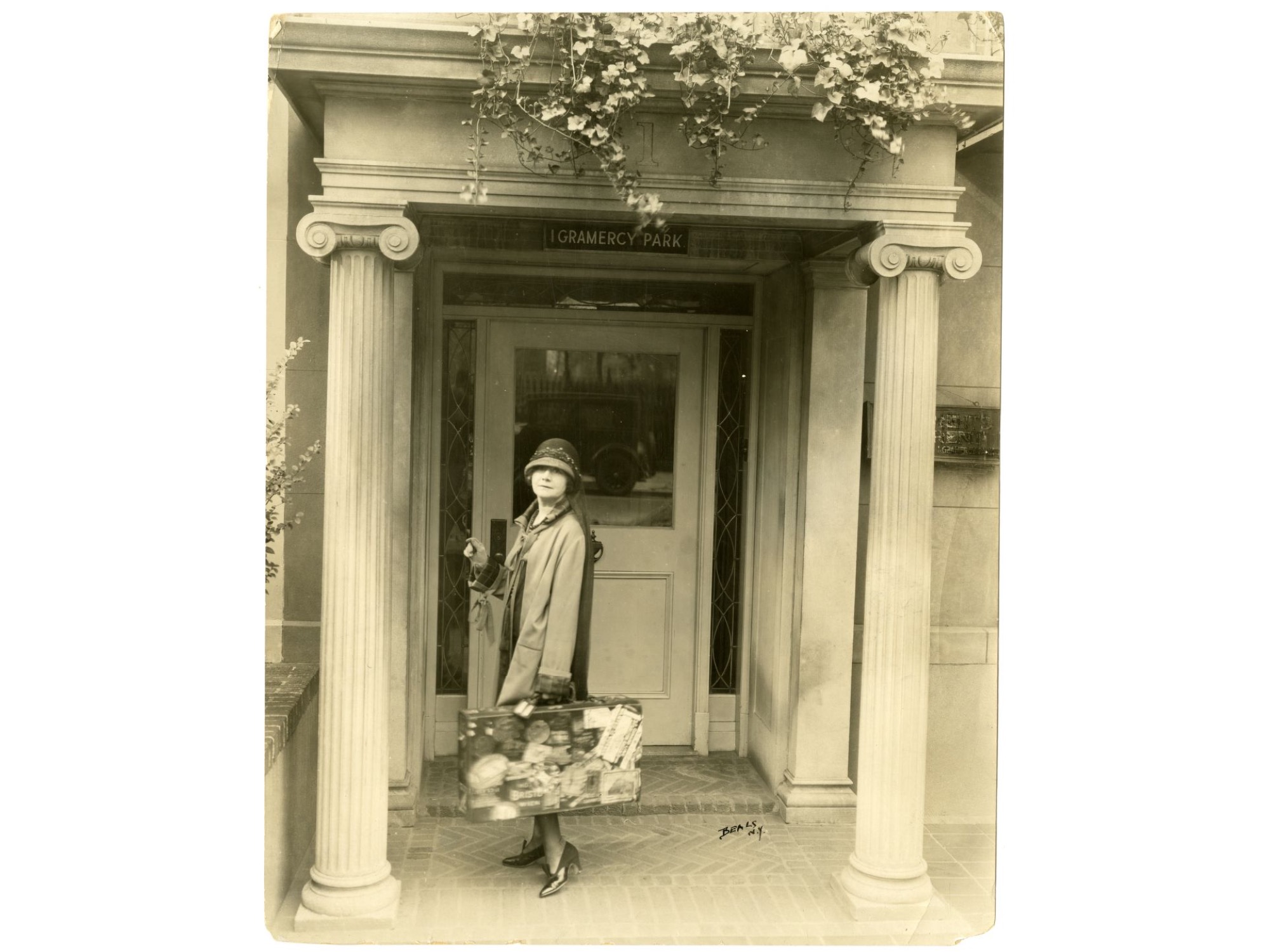
Mabel Herbert Urner, author of Helen & Warren ready for trip to Europe
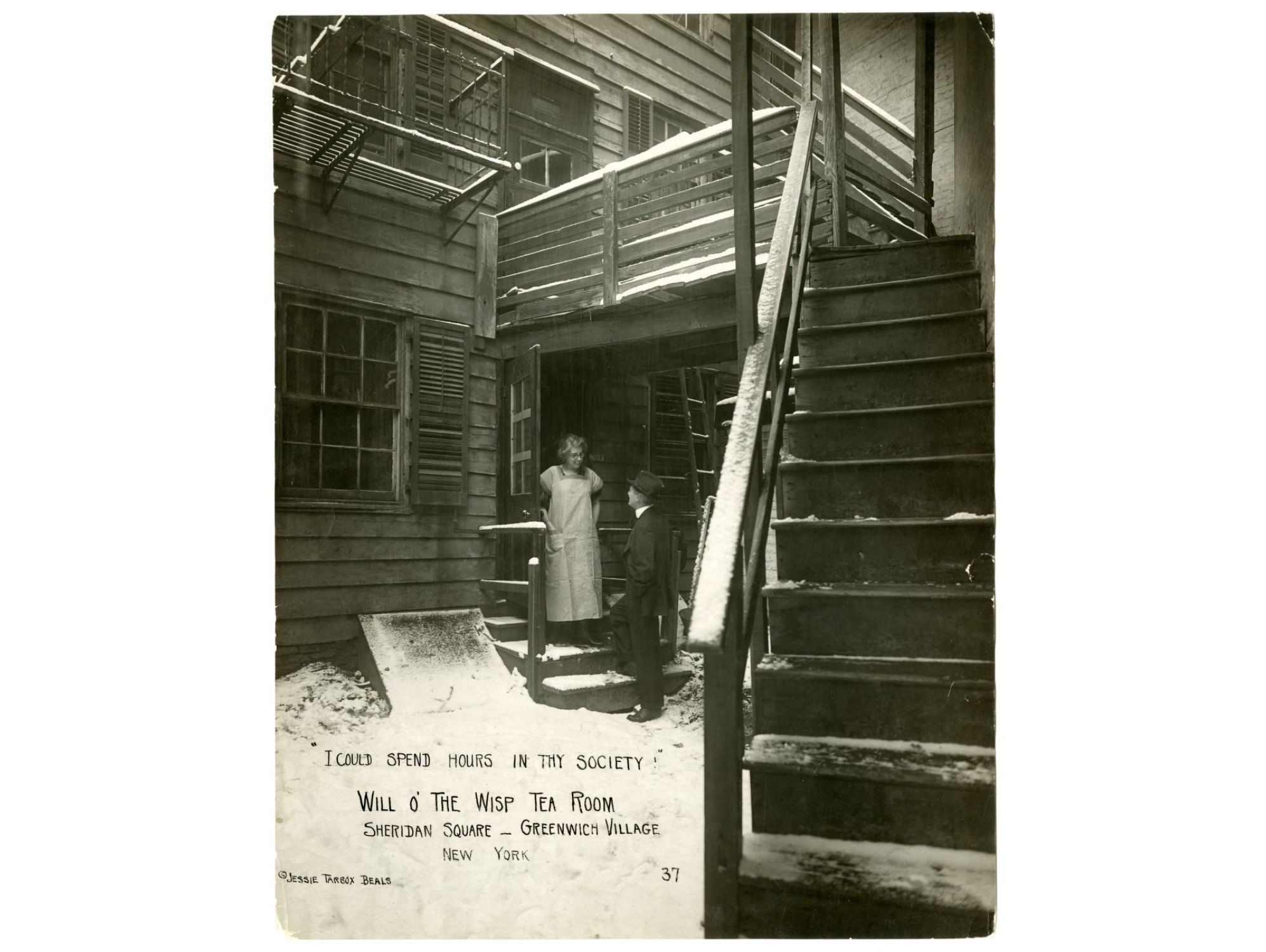
I could spend hours in thy society’ Will o’ the Wisp Tea Room, Sheridan Square–Greenwich Village, New York
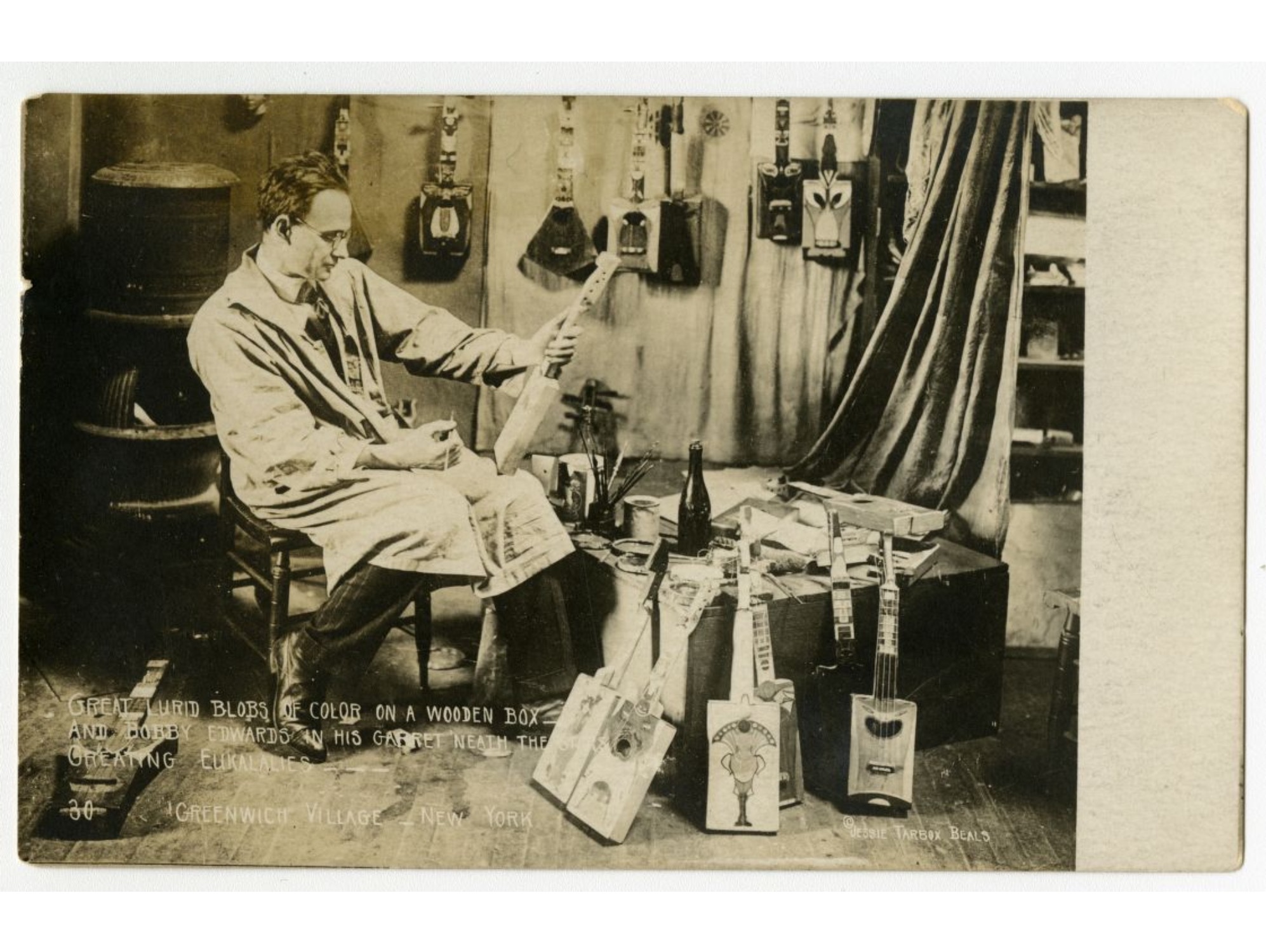
Great lurid blobs of color on a wooden box and Bobby Edwards in his garret ‘neath the stars creating ukeleles
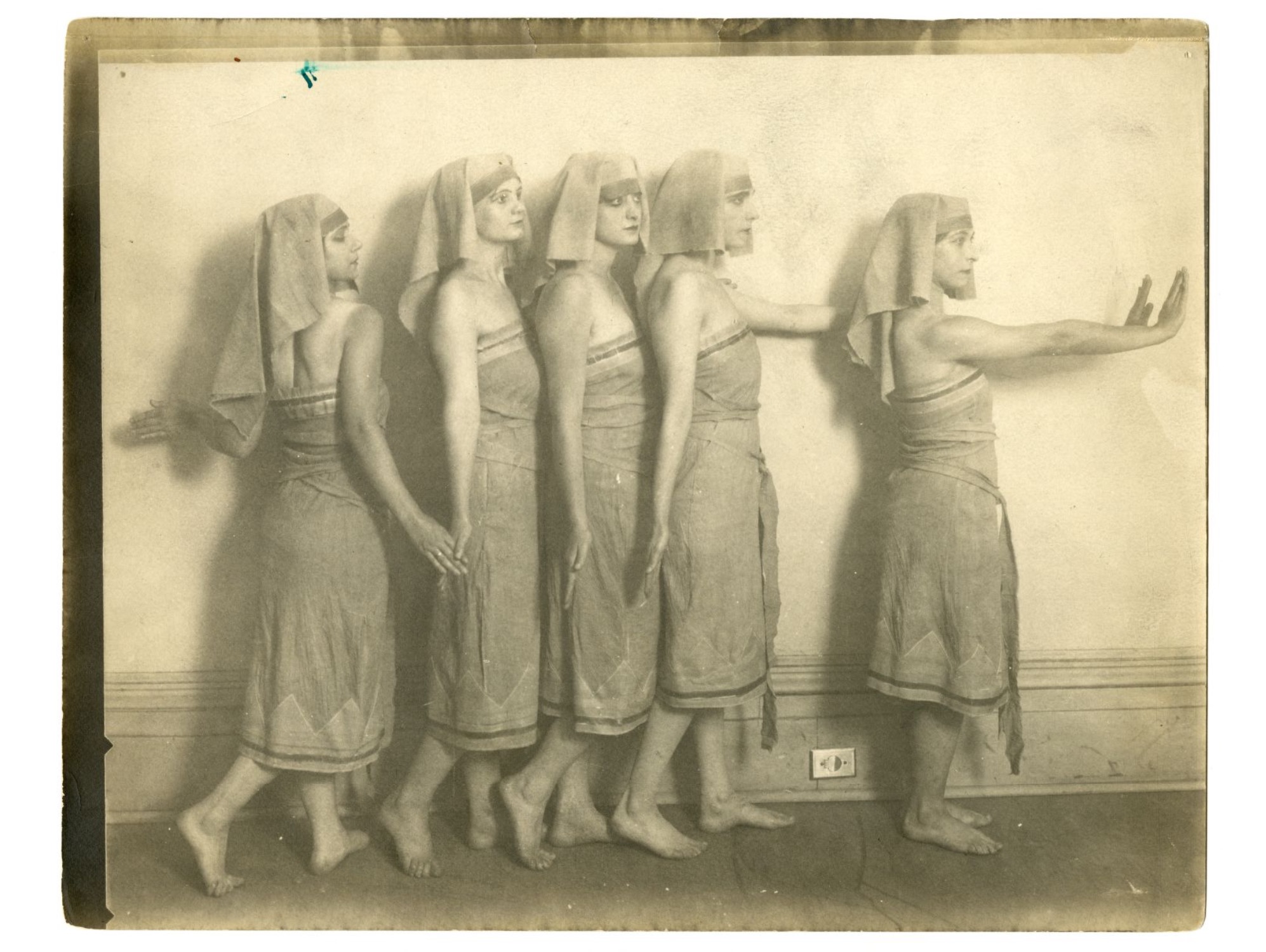
Getting ready for a village revel at Liberal Club
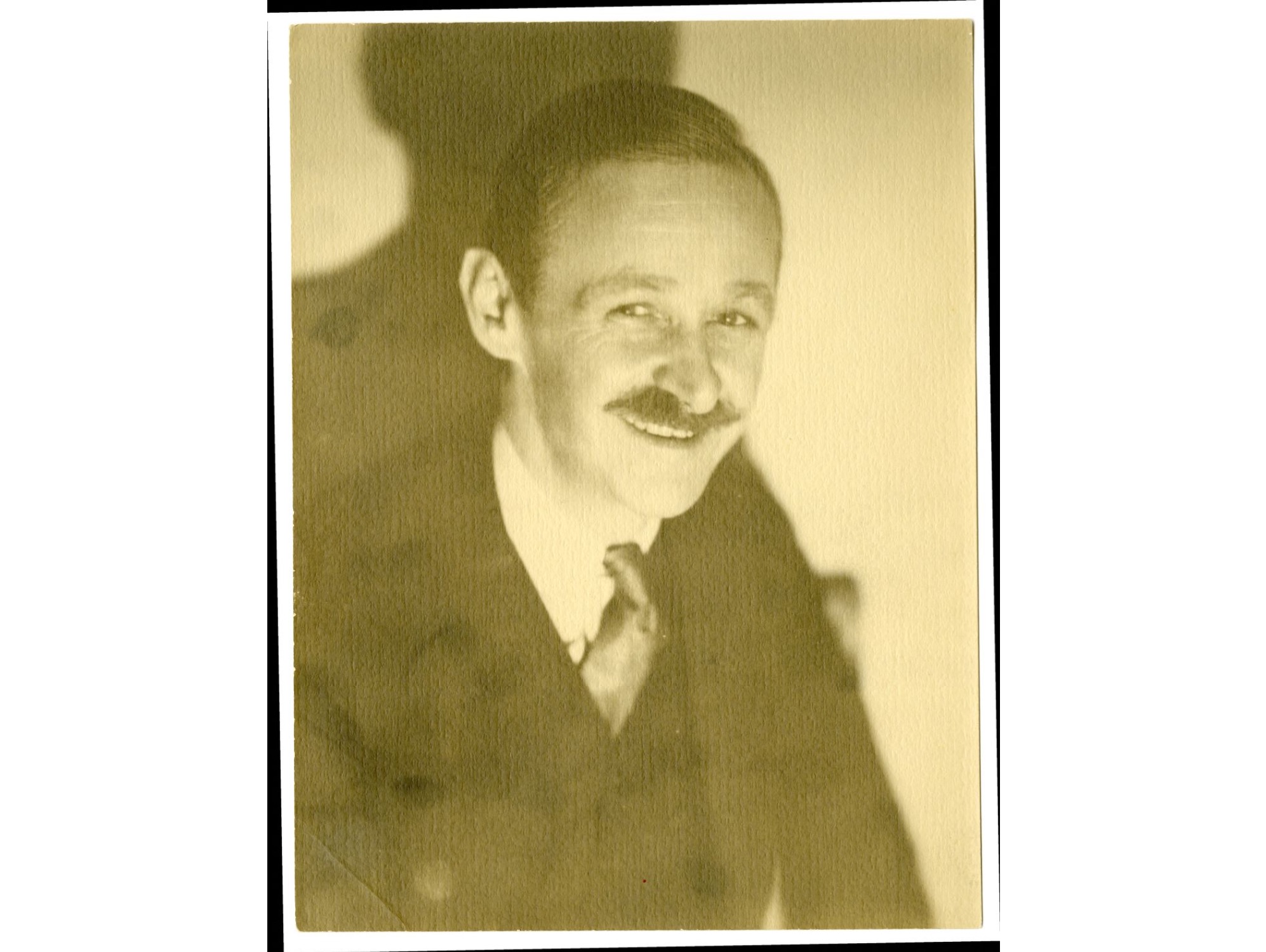
Fontaine Fox, cartoonist, ‘Toonesville Trolly’

Ernest Truex
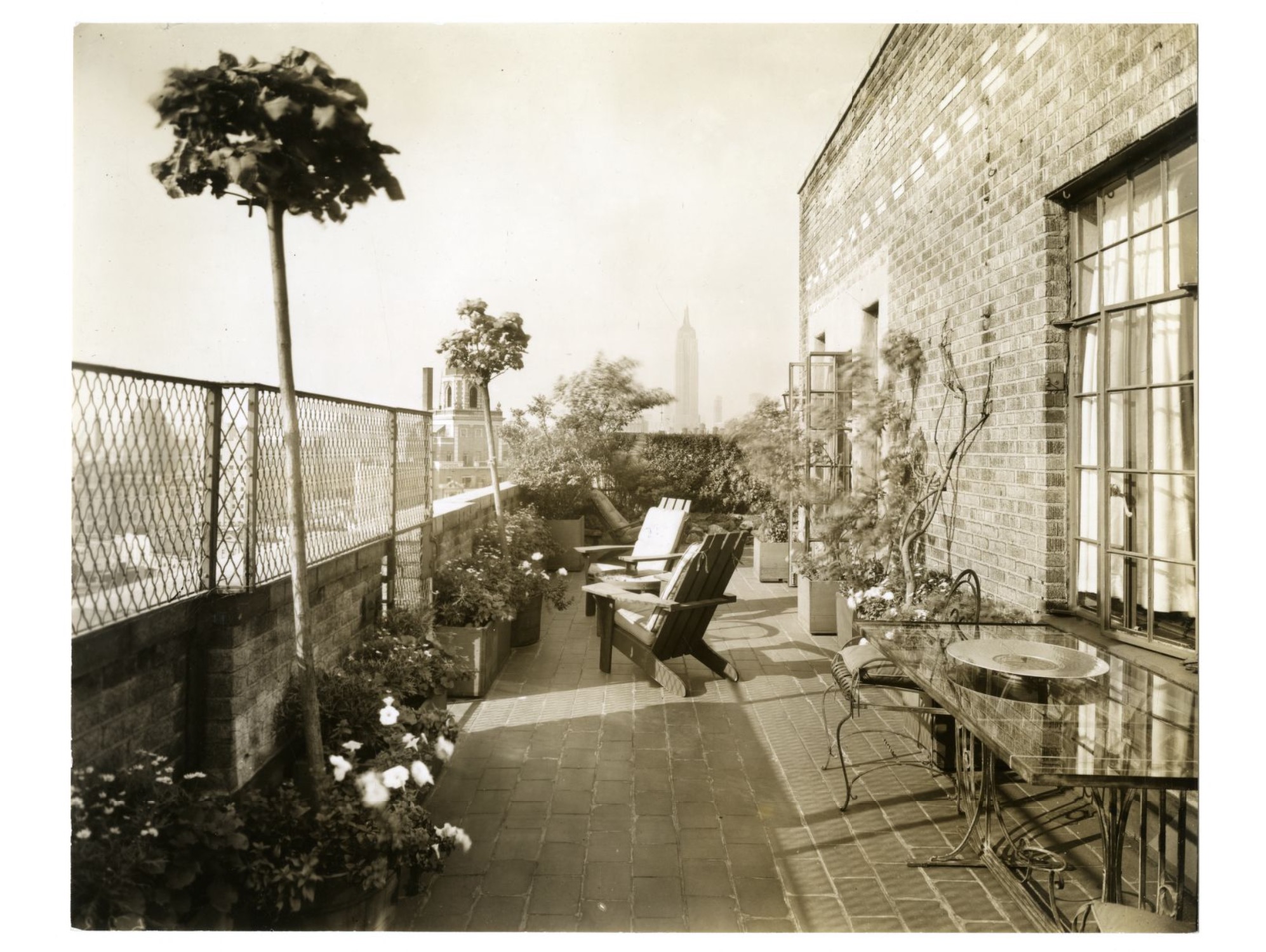
Elgart, 136 Waverly Place
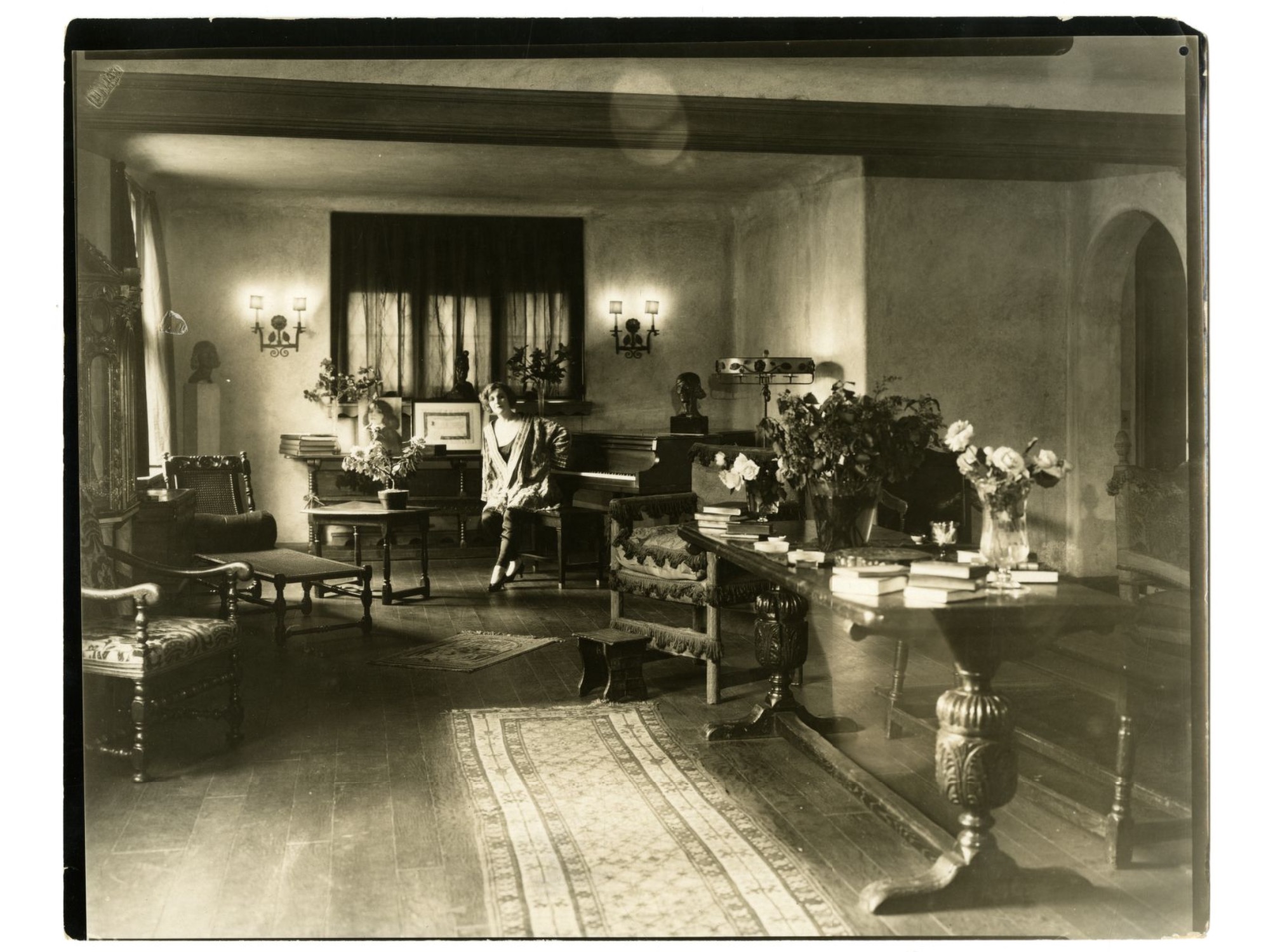
Doris Keene
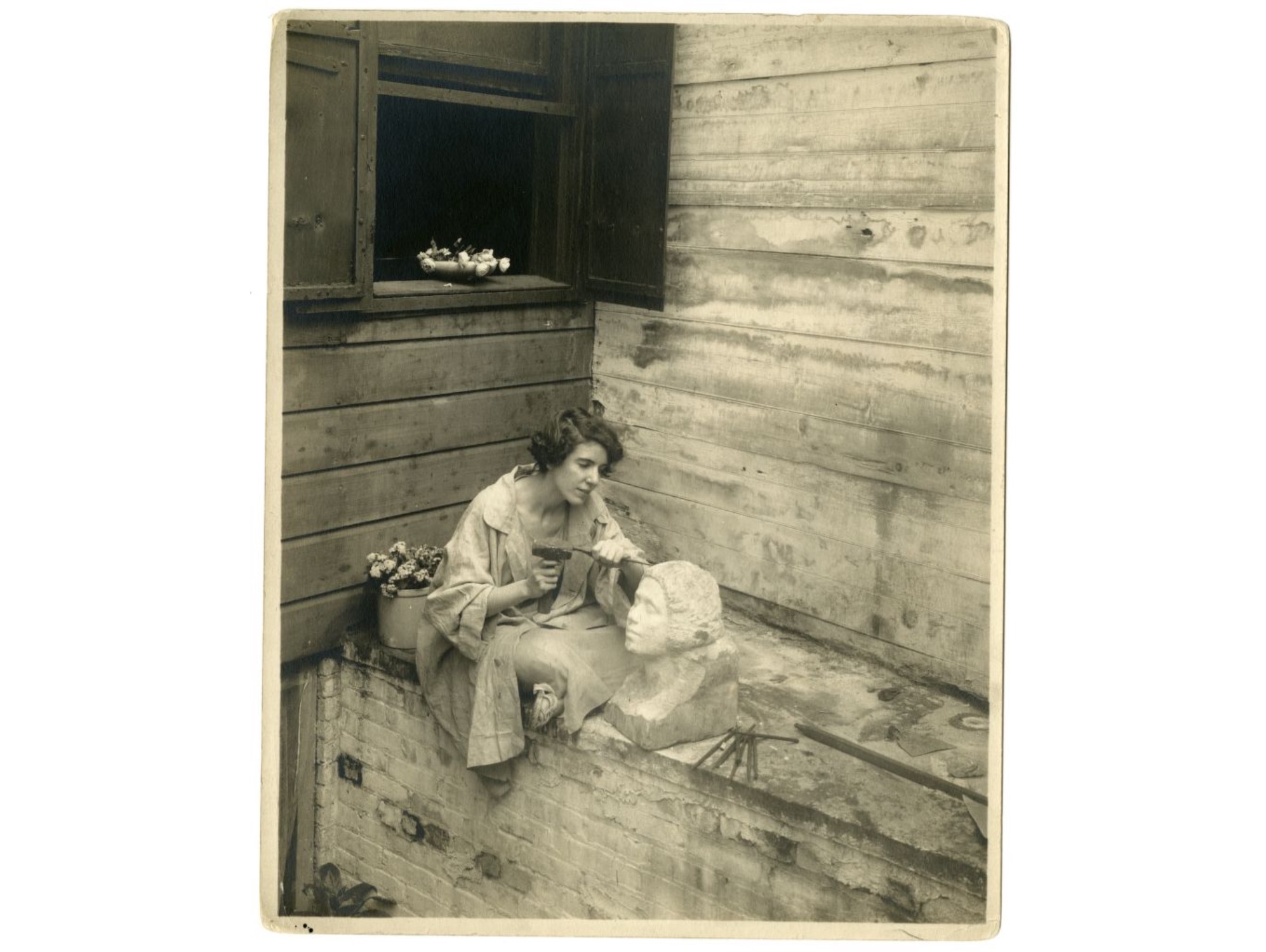
Edith Unger of the Mad Hatter Tea Room
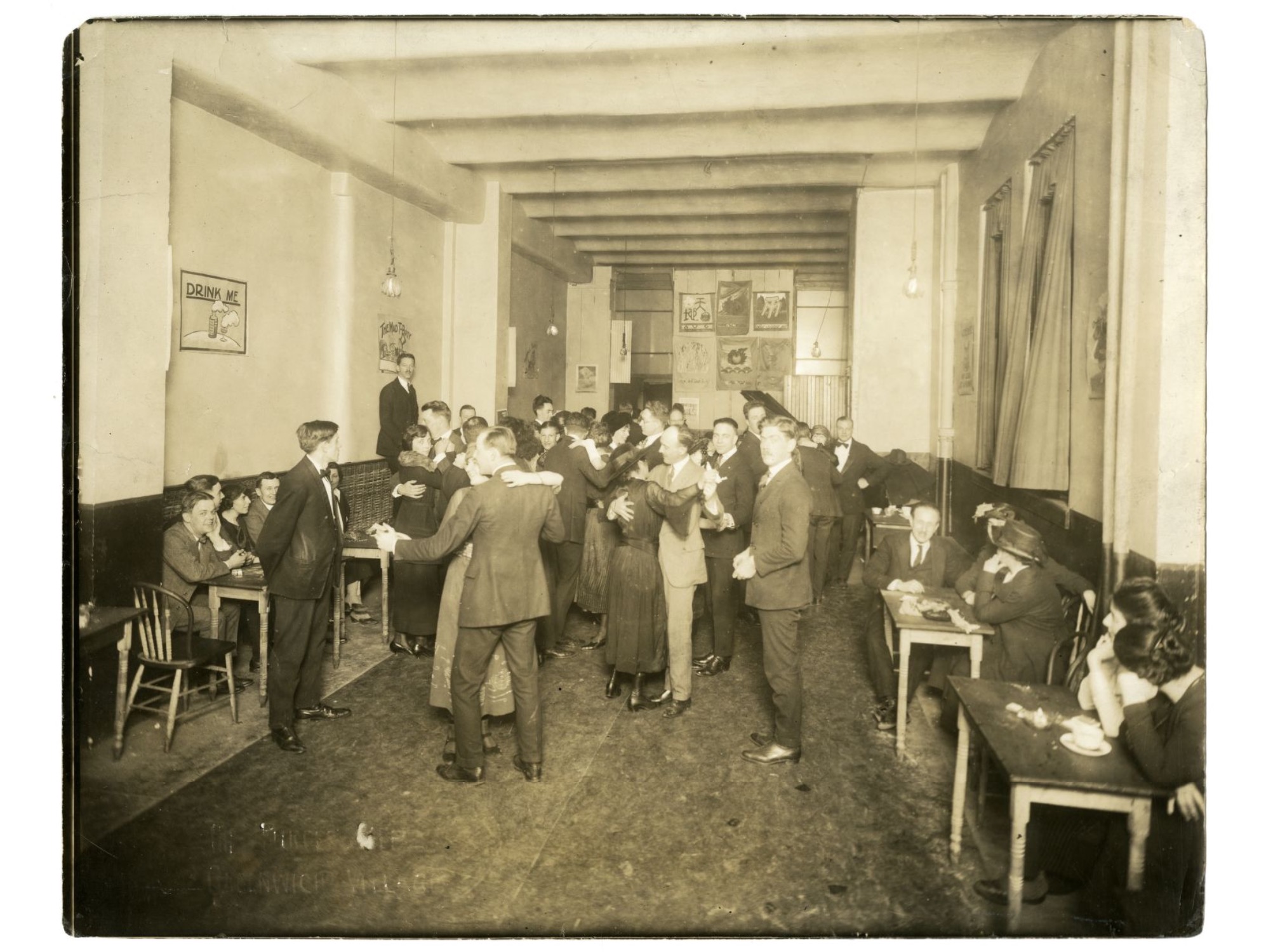
Dancing in Charley Reed’s Purple Pup, Greenwich Village
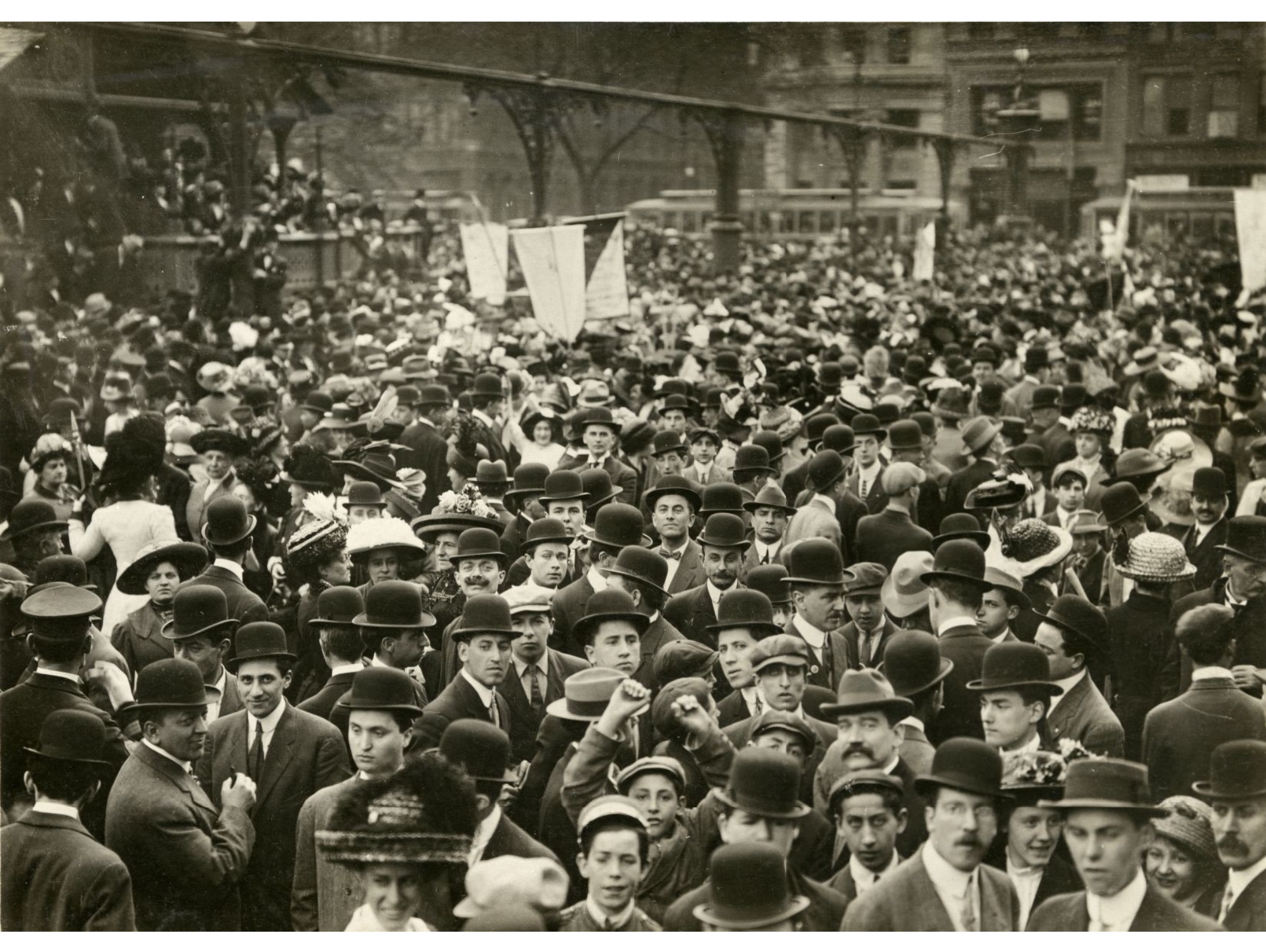
Crowd in Union Square at suffrage meeting
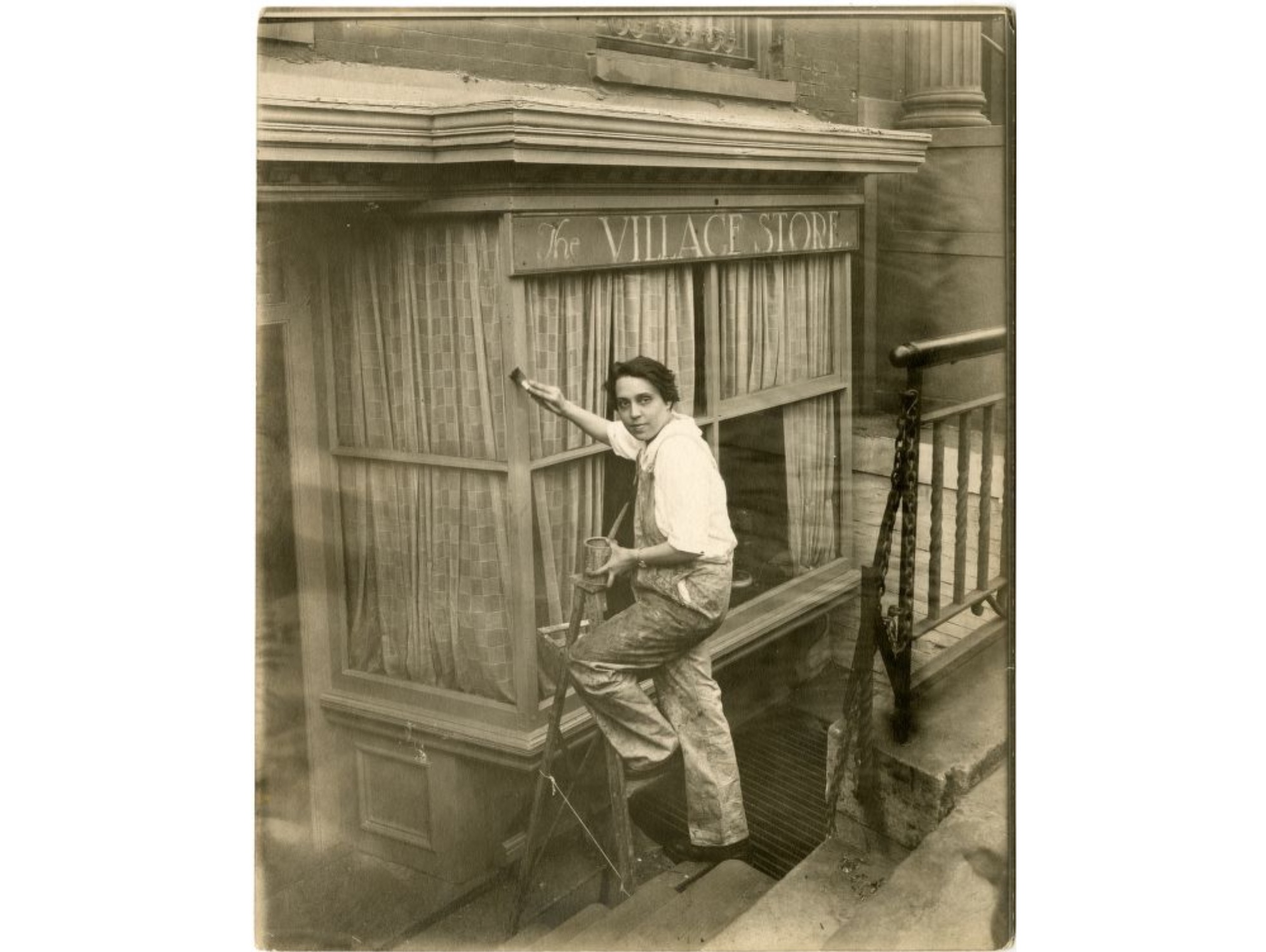
Charlotte Powell, Village painter
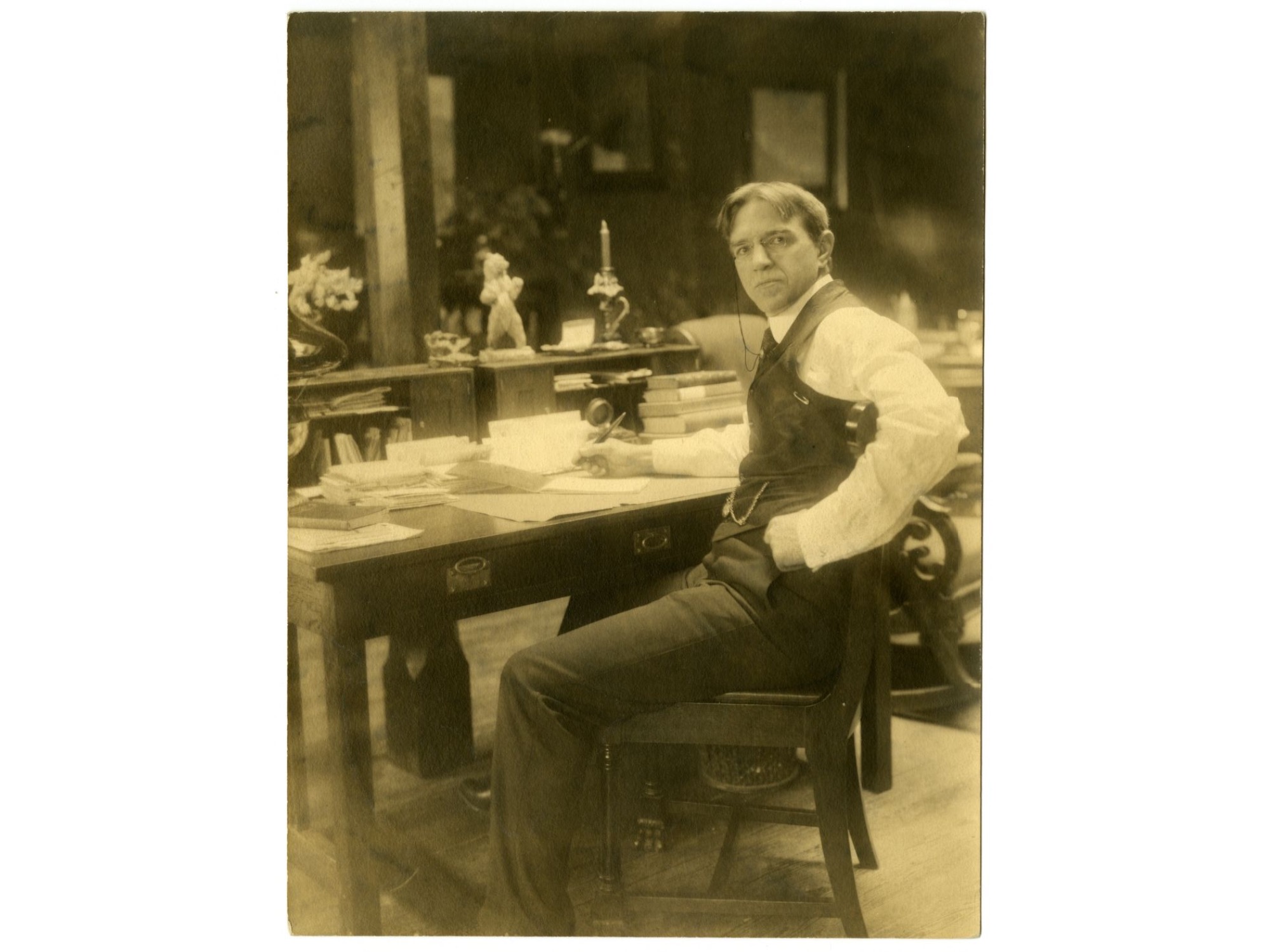
Charles G.D. Roberts, Canadian author
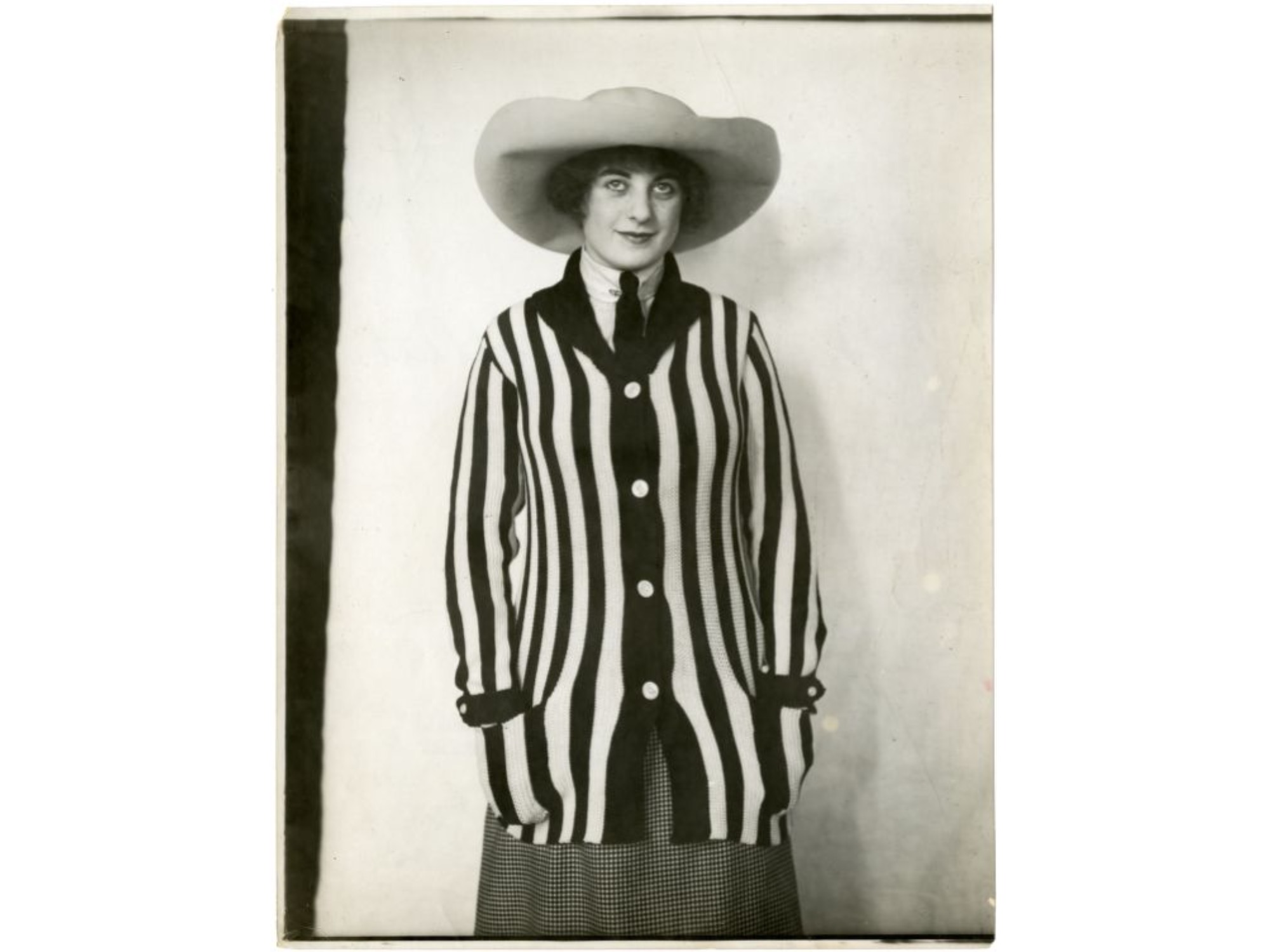
Blazer sweater & felt hat; Forsythe
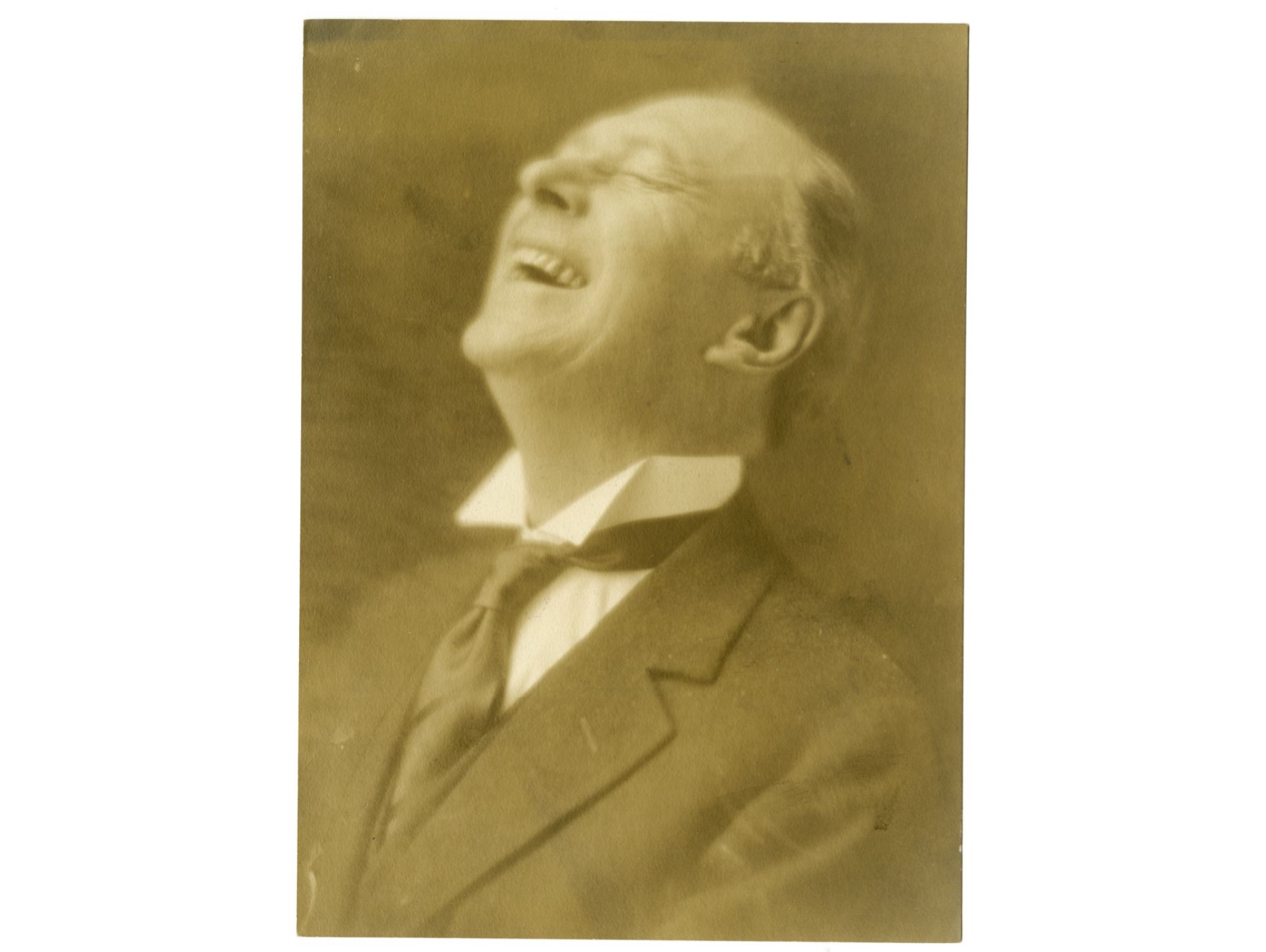
Bill Pomeroy.
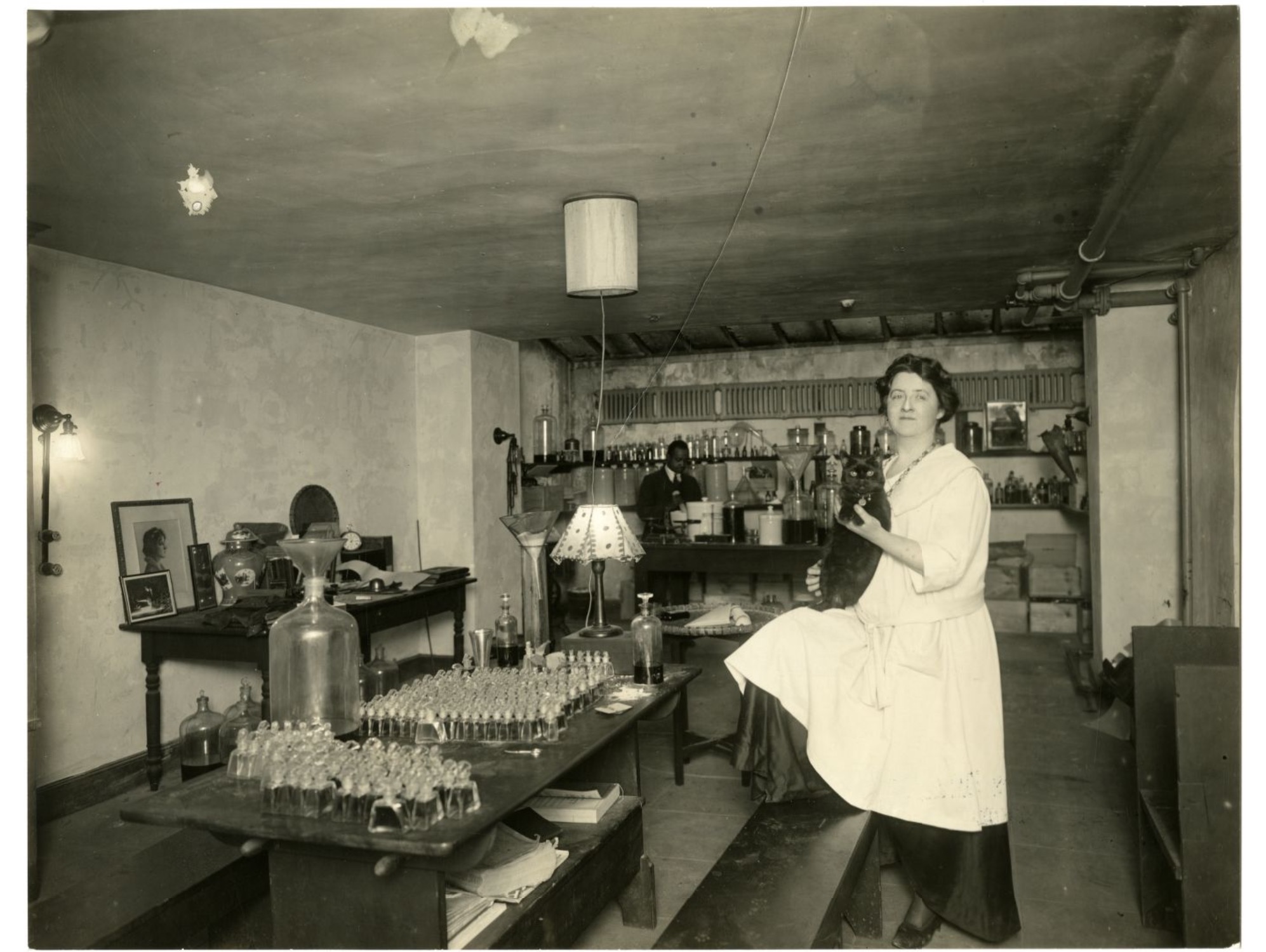
Ann Haviland, parfumier
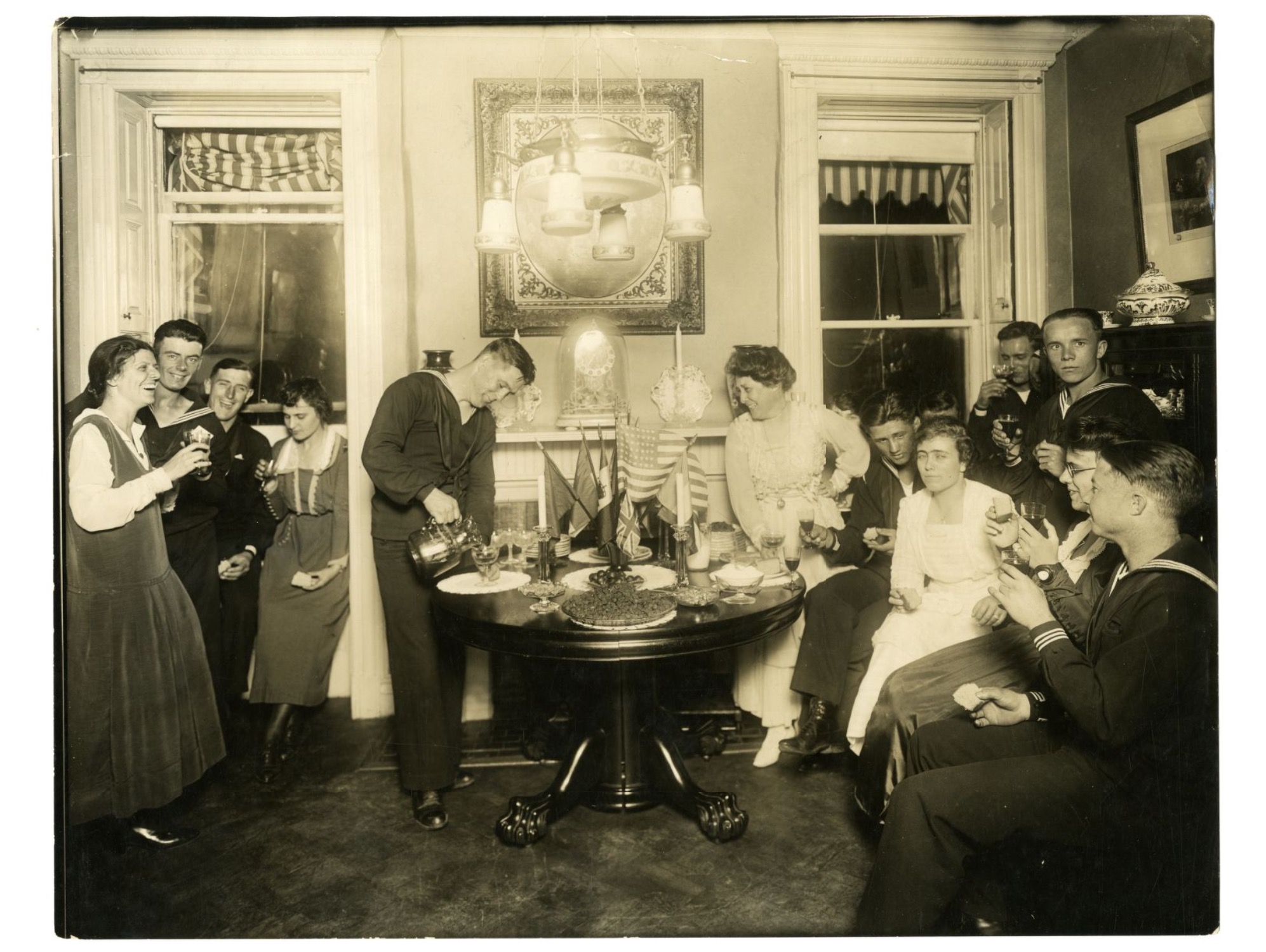
Alice Foote MacDougal entertaining a group of sailors in her small apt in Old War
Would you like to support Flashbak?
Please consider making a donation to our site. We don't want to rely on ads to bring you the best of visual culture. You can also support us by signing up to our Mailing List. And you can also follow us on Facebook, Instagram and Twitter. For great art and culture delivered to your door, visit our shop.

